
- For children and adults
- Prevents night-time wandering
- Eliminates entrapment during seizures or high night-time mobility
- Removes the risk of injury from falling out of bed
- Strong and durable - suitable for daily use
- Flame-retardant to the highest standard (CRIB 7)
- Can be used on the floor, divan base, bed frame or profile bed (for high-low use as required)
- Reduces noise for neighbours!
- Extended access version for hoists
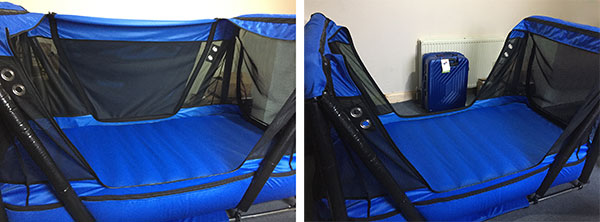

For further information or to place an order, please complete the contact form or call us on 0131 450 7124 .

If you are a member of the public looking to access our rapid self-assessment tool, AskSARA, please contact your local authority to access this service.
If you are a local authority or organisation wishing to enquire about obtaining a license for your residents, please contact us at [email protected], where we will be happy to assist.
To see a list of current Local Authority & HSCP Licensees, click the button below.
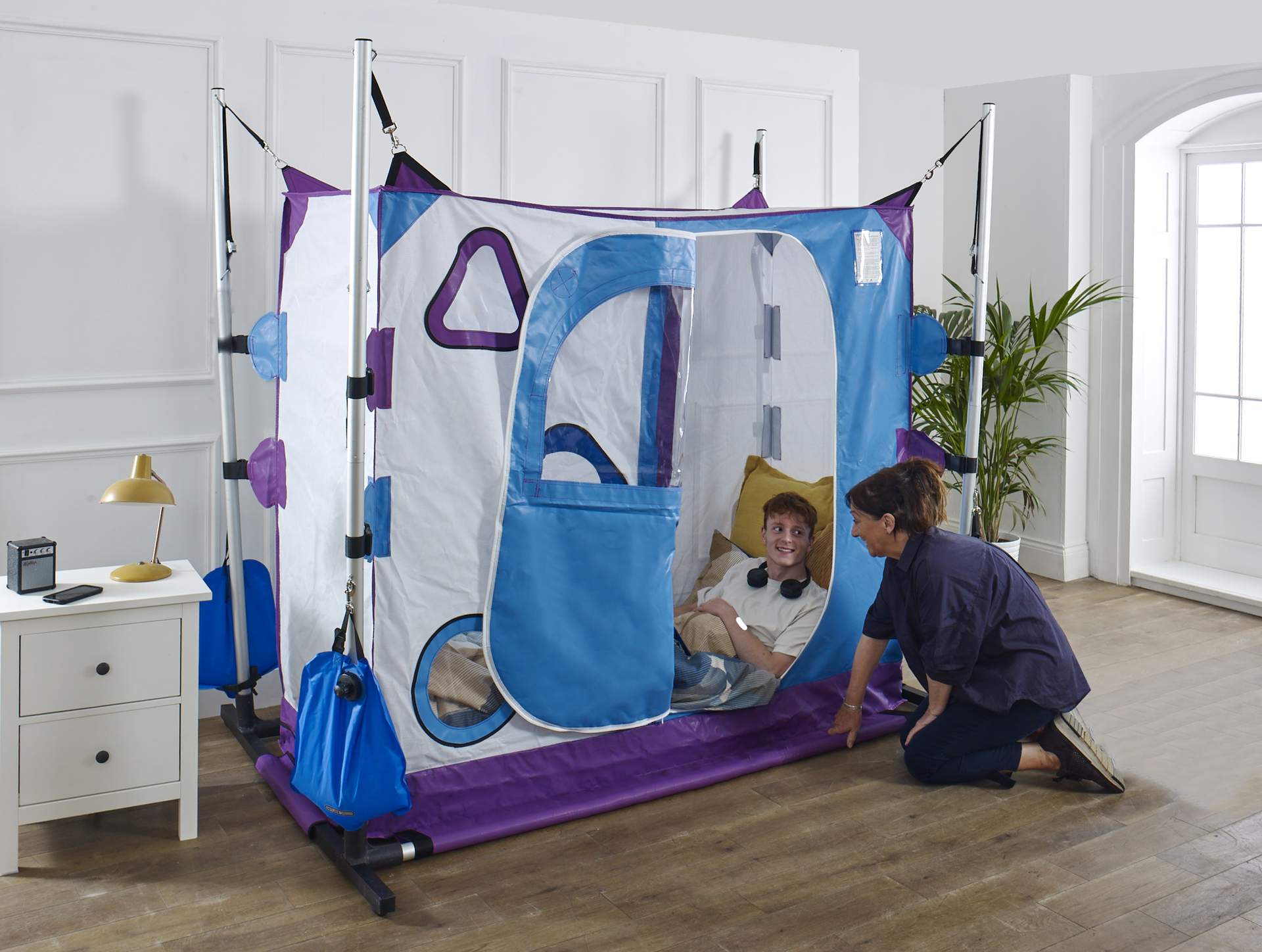
Safe, low stimulation enclosed travel bed or sleeping compartment for holidays or respite stays. Options: foam mattress for use on longer stays; additional ballast bags.
National Retailers
Local retailers, installers and support services.

There are currently no Local Retailers for this product
There are currently no installer or support services for this product, manufacturer's product description.
The Voyager travel bed provides a low stimulation, safe sleep environment designed for holidays, respite care and trips away from home. It has flexible walls and a soft floor, providing a comfortable and safe environment that reduces the risk of injury from hard surfaces, providing peace of mind for parents and carers. It is particularly useful for those with autism and who find change difficult, as it provides a consistent calm area that can be transported in the boot of a car, or taken as hold luggage on flights.
The Voyager packs away into 2 transport bags and can be assembled in approximately 15 minutes.
Who is the Voyager suitable for?
The Voyager is designed for adults and children with complex needs including autism, epilepsy, behaviours that challenge and learning difficulties. This can include those who are uncomfortable in unfamiliar surroundings or are used to a Safespace at home.
Manufacturer's Contact Details
https://www.safespaces.co.uk
361 Burnley Road
Download manuals
Key features.
- Soft, flexible sides to prevent injury
- Calming low stimulation environment ideal for sleep
- Quick and easy to assemble
Product Dimensions
Product specification, introduction, british standards, where to get help and advice, statutory provision of bed equipment, for people who need help to sit up or lie down in bed, lifting poles, rope ladders, pull straps, grab handles, mattress inclinators, pillow lifters, variable posture beds, section mattress platforms, for people who need back support when sitting in bed, v-shaped pillows, free standing backrests, tilting headboards, armchair-shaped back supports, for people who slide down the bed, supports and wedges, one way glides, tilting beds/kings fund beds, mattress inclinators and pillow lifters, for people who have difficulty getting their legs into bed, manual leg lifters, powered leg lifters, for people who have difficulty moving or turning in bed, turning beds, turning units, low friction rollers, flat sliding sheets, for people who have difficulty getting out of bed, moving to the edge of the bed, hand blocks, standing up, bed leg raisers, elevating units, adjustable height beds, for people who cannot safely take weight through their legs or whose ability to move is limited, wall-fixed/free-standing swinging hoists, overhead track hoists, mobile hoists, transfer boards, turning discs, handling belts, for people with continence difficulties, waterproof bedding, waterproof drawsheets, waterproof pads, enuresis alarms, for people with back pain, 'orthopaedic' beds and mattresses, for people who need the bed clothes away from their body or legs, bed cradles, for people who fall or wander from bed, bed rails (cotsides), padding and netting, movement activated alarms, for people who have to lie flat for long periods of time, reading stands, page turners, recumbent glasses, mattresses for comfort, standard foam mattresses, fibre filled mattresses, natural sheepskin, synthetic sheepskin, natural fleece on a fabric backing, for people who wish to eat or want to carry out leisure activities, such as reading in bed, trays with a bean filled base, trays with supports, cantilever tables, book stands, storage pouches, clamping equipment.
As most people spend between a third and a half of their lives in bed, it is important to ensure that the time spent there is as comfortable as possible, and that it is easy to move around or get in or out of the bed.
For information about choosing a standard, extra long or extra wide bed, contact the National Bed Federation (NBF) . They will be able to send you factsheets on how to choose a bed and mattress. These are provided free of charge.
The aim of this factsheet is to provide information about accessories for standard beds and beds with special features that are available to help people with specific difficulties or their carers. These difficulties may include getting in and out of bed, turning over, sitting up and generally getting comfortable in bed. Comfort and sleeping well are essential not only for the well-being of a person, but also because, for some people, they may mean the difference between being able or unable to carry out activities independently. If you are experiencing difficulty with any of the activities mentioned above, you may benefit from an assessment by a physiotherapist or occupational therapist. Sometimes a change in the way you carry out an activity or a different technique may help you to manage independently instead of using equipment.
Many of the beds with special features are available as a double bed where one side of the bed remains as a standard bed.
All upholstered furniture that is intended for private use in a house needs to conform to the Furniture and Furnishings (Fire)(Safety) Regulations act 1988. Within each standard there are several parts with tests of increasing severity. Check with suppliers which parts have been met.
It is advisable to seek independent advice before buying bed accessories or buying a special bed. Sometimes another solution may help instead, or the local council or health service may provide an appropriate service. Beware of salesmen who try to persuade you to buy equipment that does not meet your needs or is poor value for money.
If you have a disability or you are caring for someone with a disability, remember that you have the right to ask social services for a community care assessment.
The council assessor considers the type and level of your need. If you have many needs or if your needs are assessed as essential or complex the council may help directly; for example, if you have difficulty moving in bed and getting out of bed.
If you find you would prefer a different service to the one offered by the local authority you can ask for a direct payment of money instead; since April 2003, this also applies to equipment the local authority may offer you.
If your needs are few or simple, the council may not help directly. For example, if your only need is that your bed is too low which makes it difficult for you to stand up, you may receive advice on alternative ways of solving the problem instead of direct help. Perhaps you may be directed to where you can buy equipment locally, visit a local independent living centre or obtain suitable mail order catalogues.
The recommendation is that before you buy any equipment, particularly beds, try it out.
In the past this was often seen by the different authorities as a grey area of provision. Even today, the organisation that provides this type of equipment may vary from one area of the country to another.
Sometimes it is regarded as home nursing equipment, i.e. that which a community nurse considers necessary to help him or her carry out nursing duties effectively. Examples of items that may be supplied by the community nurse are:
- bed backrests, bed cradles, bed tables, bed rails, bed linen;
- beds such as pressure relief beds or mattresses and hospital-type nursing beds;
- hoists and small handling equipment.
However, other items are regarded as daily living equipment, i.e. that which enables a person to get on with daily living, and may make them more independent.
This may include items such as:
- rope ladders, bed blocks, self-lifting blocks, lifting poles, grab handles;
- overhead and mobile hoists;
- leg lifters.
This type of equipment may be supplied by social services.
The different authorities now have a legal duty to work together to try and ensure equipment is provided as quickly as possible after an assessment of need is agreed.

Lifting poles (or pull handles) are designed to make moving around, moving into semi-lying positions or getting in and out of bed easier. The majority have a floor standing cantilever gantry, although some are wall- or bed-attached. If freestanding, care should be taken to ensure that the base is positioned properly under the bed, otherwise the gantry frame may tip over. A handle hangs from the gantry and, when adjusted to a suitable height, some people with enough strength can pull on it safely. The user does need to have fairly strong upper limbs and good abdominal control.
Lifting poles are not usually suitable for people with painful arms, painful shoulders, limited overhead shoulder movement or abdominal weakness.
Consider the following:
- a moulded handgrip may be more comfortable to hold and an adjustable length strap provides greater flexibility;
- ensure that there is enough room for the base to slide under a divan bed and, where possible, fasten it to the bed headboard for greater stability;
- if the person also uses a mobile hoist for transfers, ensure that the lifting pole base does not prevent the hoist from being correctly positioned under the bed, and that the overhead arm does not obstruct the lifting boom of the hoist;
- some models dismantle for transporting, which may make it possible to take the lifting pole on holiday;
- remember that appearance is important, especially if the pole is to be used in a domestic setting. Some of the frames look very clinical.

Rope ladders either fit onto the footboard, the bed frame or the two feet at the end of the bed. They have rungs which the person pulls on to help him/herself into a sitting position.
Ensure that the ladder is safely and securely fixed in place and that the first rung is within reach of the person lying on the bed. Take care as those with plastic rungs may be slippery to hold. A retrieval line pinned to the bedclothes is sometimes needed if the rope ladder slips to the floor during the night.
A pull strap has a similar function to a rope ladder; instead of rungs to pull on there are loops in the strap. Some straps have a clip that makes it easier to secure the strap to the bed. They are lightweight and easily transported.

The various types of grab handles on the market are either wall-fixed, bed-fixed or floor-fixed. They are used to pull on by someone to help sit up or turn over in bed.
- Some are fixed in one position, whilst others lock into a choice of several positions. Some of the static models could obstruct part of the bedside, making it difficult to get in and out.
- Floor-fixed rails may be difficult to install if the floor is made of concrete.
- Ensure that bed-attached models are securely fixed. Some are tucked under the mattress and only rely on the weight of the person to secure them in position.
- Ensure that there is no risk of entrapment within the rail, at either end of the rail or between the rail and the mattress.
Guidance on spaces and safety can be found in the 2001 bulletin from the Medicines and Healthcare Products Regulatory Agency entitled Advice on the safe use of bed rails.

Mattress inclinators (or mattress variators) are powered devices which can help a person sit up and lie down independently. They can remain raised to form a backrest if required to support a person in a sitting position. They are available for single or double beds.
- check the mattress is compatible with the mattress inclinator. Hinged mattresses are most suitable and fibre- or foam-filled mattresses are usually compatible. Mattresses with continuous wire edging are unsuitable and pocket sprung mattresses may be damaged by long term use;
- because most inclinators do not have a knee break there is a risk the person may slip down the bed as soon as he/she sits up or later after a period of sitting. Three- or four-sectioned variable posture beds have the option to raise the person's knees to help prevent this happening;
- mattress elevators usually have a hinged frame which is placed between, and strapped to, the bed base and the mattress. Depending on the model chosen, the mattress is raised by air from a powered compressor inflating an air bag enclosed in the frame, or by a hydraulic piston attached to the frame;
- the amount of noise made by these units varies. Personal preference and whether other people nearby will be disturbed needs considering. Air bags tend to be noisier and hydraulic pistons quieter;
- most inclinators are controlled with a handset. Usually this has two separate switches or one rocker switch. Alternative controls, e.g. a joystick, are sometimes available;
- mattress inclinators and pillow lifters usually lift the person forwards and away from the bedside cabinet. A few models are designed to slide back as they lift so that the cabinet is still in reach.

Pillow lifters (or pillow lifts) rest on the top of the mattress and under the pillow (sometimes the pillow is part of the equipment). They are similar to mattress inclinators but are much narrower and give less support. If there is a risk that the person may fall off sideways it is probably more appropriate to use a mattress inclinator or a variable posture bed.
Pillow lifters with a knee break reduce the risk that the person will slip down the bed.

Variable posture beds have sections in the base under the mattress. The sections can hinge to form a back raise and sometimes a leg raise as well. This feature is known as profiling.
Some companies have a double bed option. Usually this comprises two single beds placed close together (one or both with the profiling option). If needed, ensure the beds will separate easily, e.g. for carers to assist from both sides, and/or there is sufficient clearance underneath, e.g. for the legs of a portable hoist.
- three-section variable posture beds slightly raise the user’s knees, forming a knee break that may prevent him/her from sliding down the bed;
- a more comfortable and stable position can be achieved in a bed with four sections, as the user’s bottom remains horizontal while the knees are raised to form a break;
- five-section beds provide more profiling within the head/backrest section;
- two-section beds are sit-up only; the angle of the head section is adjusted to help sitting up/lying down or to form a backrest. There is no knee break option and, like most mattress inclinators and pillow lifters, it is likely that the person will slip down the bed.
Variable posture beds can be adjusted manually or electrically while the person is on the bed:
- those with a powered mechanism are usually controlled with a handset. Although powered by a motor, most are quiet or almost silent;
- manually operated beds are controlled by a foot-operated gas-assisted mechanism, a lever or winding mechanism or a ratchet system. The carer can find all of these quite hard work and the user cannot control the adjustment.
The mattresses for these beds are either foam, latex or sprung. They should have divisions to correspond with the sections of the bed's mattress platform. A sprung mattress with continuous wire edging should not be used, as it will make it difficult to profile the bed. It is advisable to check with the bed manufacturer if the mattress needs to be replaced at any stage. Alternatively, the National Bed Federation can provide information on companies that sell sectioned mattresses.
Both domestic and hospital versions of variable posture beds are available. The domestic ones tend to be smaller with a wooden or padded headboard and generally look more homely. The hospital versions are larger, usually with a metal frame, more resilient and often have a choice of nursing functions.
It is important to check that a hospital bed provides the functions needed. Many have a tilting mechanism and most have the option of safety sides. It is necessary to specify other options; e.g. quick release of the backrest for resuscitation, removable head and footboards for assisted transfers, or the facility to choose which bed movements the occupant is able to control.
These can be fitted onto the frame of a standard bed so that the platform can profile the mattress like a variable posture bed. The powered mechanism is controlled by a handset.

These can be used either as a bed or chair and users do not have to transfer from chair to bed or vice versa if they need to change position or sleep.
Some take the form of very adjustable beds, which can be electrically profiled so that the person is able to achieve a sitting position. Others are primarily chairs that can be reclined fully so that the person can lie horizontally.
Some of the items below are occasionally used in conjunction with those in the following section - ‘For people who slide down the bed’- to prevent the person from sliding down the bed when in a seated position.

These are used inverted on the bed to support the person’s shoulders, arms and neck.

These have a wooden or metal frame. The angle of the supporting surface can be adjusted for use under the pillows to support the person in a sitting position. A headboard is essential to prevent the backrest from sliding backwards. Most fold flat for storage.
Tilting headboards are pulled forward at the base to provide a backrest. They are found on many older hospital beds. The manual operation is often hazardous involving twisting, bending and straining.
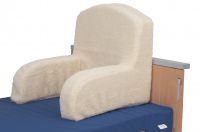
These supports are usually made of covered foam and have a backrest and armrests to provide comfort and support.
These can be adjusted to change the shape or profile of the bed according to the needs of the individual. The head end of the mattress can be elevated to support the back and shoulders of a person whilst they are sitting, and a knee break stops users from sliding down the bed. For further information see section ‘For people who need help to sit up or lie down in bed’.
The following items may help to provide a stable position for someone in bed. A person is more likely to slip down the bed when in a sitting position if they are not supported under their knees. Care should be taken that frequent sliding does not result in pressure ulcers.

These are foam wedges or shaped pillows that can be positioned under the legs to provide support in bed.

A footboard is attached to the mattress or to a fixing plate at the end of the bed. Users need to have enough strength in their legs to push against it to prevent them from sliding down the bed or to enable them to re-position themselves.
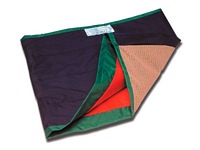
These are slip-resistant devices that move in one direction only. They are made of a length of material that has been stitched to form a continuous roller. The inside of the glide is made of a material that will easily slide one way, but cannot slide the other way. It is placed under the person sitting in bed, and enables him/her to slide or be slid backwards into a stable position, but not to slide forwards again. Some have foam or gel cushion inserts for comfort.
Some sliding sheets can also be used in a similar way. Care should be taken to ensure that the material does not wrinkle up under the bottom of the user, as any creases could be uncomfortable and potentially lead to pressure ulcers.
Kings Fund beds are used mainly in hospitals although, on rare occasions, they are provided as nursing equipment in a domestic environment if space permits. Hospital beds are heavy and the risks of delivering and installing the bed will prohibit use in many situations. To help prevent the occupant from sliding down either in a sitting or lying position the bed can be angled backwards by 3° or 4°. Making this adjustment can be very hazardous, as the foot end of the bed needs to be lifted and lowered manually. It is preferable to use a bed with an electrically controlled tilting facility or a variable posture bed with a knee break. Some domestic-type beds have these features.
These can be adjusted to change the shape or profile of the bed according to the needs of the individual. Users can adjust the bed so that they remain in a comfortable sitting position as their knees are being raised to form a break. Four- or five- section beds tend to be more comfortable than those with three sections. For further information about variable posture beds, see the section ‘For people who need help to sit up or lie down in bed’
Mattress inclinators or pillow lifters with a knee break that raise the person’s knees will sometimes help to stop him/her sliding down the bed when sitting up. For further information about this type of equipment, see the section ‘For people who need help to sit up or lie down in bed’

These consist of a reinforced strap with a loop on the end. The person hooks his/her leg through the loop and then physically lifts the loop up onto the bed. However, the person concerned must have the strength, dexterity and the sitting balance to carry out the task. Some people use the crook neck of a walking stick or a looped webbing strap to perform the same task.

These are powered devices that attach to the bed frame and require the user to sit on the edge of the bed with his/her feet on the floor in front of the device. They work on the principle of a platform that raises through an arc of 90°, lifting the legs of the user to a position just beyond the horizontal, level with the mattress. From this position the user can slide his/her legs off the platform and onto the bed.
- Some use a compressor to fill an air sack which, as it inflates, raises the platform. However, many of these compressors make a noise like a vacuum cleaner and may be disturbing.
- Both types are controlled by a handset, which either has two separate switches or a rocker switch.
Most people need to move or turn regularly in bed, either just for comfort or to prevent pressure ulcers from forming.
Some people may find that the use of slippery nightwear or bedding such as satin pyjamas or sheets, combined with pulling on strategically placed grab rails or handles, may help them turn over or be assisted to turn over more easily.
These can be used, with or without a pressure relief mattress, to reposition the user so that he/she may not have to be turned. By altering the profile of the bed the position of the user and weight distribution will be changed. This may be sufficient to prevent pressure ulcers from forming.
If the backrest is in a semi-reclined position, the person may be able to pull on a lifting pole and roll onto one side or the other independently to relieve buttock pressure. Alternatively, this could be done by bridging, i.e. by users lifting their bottom off the bed by pushing their feet down onto the mattress with bent knees.
The height of some variable posture beds is also adjustable, either manually or electrically. Carers can raise these beds without needing to stoop and bend when assisting people to turn.
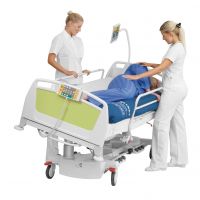
These are mains powered hospital-type beds which will turn the user from side to side. Because of their size, they are not often used in a domestic situation. Most are controlled by the carer from a panel at the end of the bed or by foot controls. Some can be controlled independently by the person in bed, while others have an automated turning facility that carries out a turning cycle, for example every three to five minutes.

These can be used on top of a domestic bed and take the form of either a sectioned mattress which has an airbag under each side of the mattress that alternately inflates and deflates, or a turning sheet which moves around two rollers on a frame on either side of the bed. Both styles have the effect of turning the person from side to side. They can be controlled using a handset, or can be set to turn at pre-programmed times automatically.
It is advisable to use these units in conjunction with bed rails (cot sides), as they have no built-in side protection.
These are made of a length of material which has either been stitched to form a continuous roller or is folded in a similar way so that the slippery material on the surfaces inside will easily slide against each other.
The roller is placed across the bed and under the user who is lying flat on the bed with the open ends facing the head and feet. Once the roller is positioned some users find they can then turn independently. Alternatively, carers can assist the user by pulling on the top layer of the roller or by pulling on a correctly positioned handling sheet on top of the roller.
Before using a product like this, carers need to know not only how to position themselves correctly but also a safe technique, as bad posture and poor technique during these types of manoeuvre can lead to back pain or injury.
Two main sizes of roller are available: a small version (large cushion size) and a larger version (sleeping bag size). If the smaller, cushion sized roller is used, it is placed under the user’s shoulders and bottom. The larger, sleeping bag sized version is placed so that it extends from head to toe. When used for turning, the open ends of the rollers are always towards the head and foot end of the bed.
Some rollers are padded and can, occasionally, be left in position under the person; others are very thin and are nearly always removed after use. If a roller is left in position it is important to ensure the person will not accidentally slip out of bed.
High friction inserts are available to put in a roller to stop slipping. They are taken out when the roller is used again.
Sometimes two flat sliding sheets are used, one on top of another, instead of a roller. The advantage of this is that carers can use the sheets not only to assist turning but also to move the person up the bed and across it. Sometimes the flat sliding sheets are used in conjunction with a flat board, which bridges any gap to help transfer the person from one lying surface to another.
Some people find it difficult to get to the edge of the bed to swing their legs over the side. In order to move across the bed, a person must lift their bottom clear of the mattress surface. However, most people find their arms are not long enough to do this while in a seated position, particularly if they are well built, or the mattress is soft and allows their hands to sink down into it. A physiotherapist or occupational therapist may advise on a specific technique to use or, alternatively, the following equipment may help.
By profiling the bed into a sitting position, and by pulling on a strategically positioned grab rail or lifting pole, people may be able to take some of their body weight in order to raise themselves several centimetres from the bed, helping them to manoeuvre their bottom to the edge of the bed from where it may be easier to stand up.
For further details on variable posture beds, grab rails and lifting poles, see section ‘For people who need help to sit up or lie down in bed’.

If hand blocks are placed on either side of a person, they can, by pushing down on them, raise themselves several centimetres from the bed enabling them to change their position, e.g. move towards the edge of the bed.
Ensure that the blocks have a firm base and the handgrips are comfortable to hold.
The major difficulty encountered by some people when getting out of bed is standing up. Raising the height of the bed sometimes helps. It is possible to buy an extra high bed, or some beds have adjustable telescopic legs which enable the bed to be set at a specific height. However, in some cases it may be difficult to find a compromise between the optimum height for the carers who are helping with personal care or nursing activities, and a suitable height for the person so that he/she can sit on the edge of the bed with feet firmly on the floor. Height adjustable equipment may provide a solution. This is essential if one height is needed for getting out of bed and another for getting into it.

Bed leg raisers are placed under the legs to raise the height of the bed. This can make standing easier. However, once raised, the height of the bed is set and the problems mentioned before may sometimes still be encountered. For example, although the raised height helps a person to stand it is too high for them to sit safely on the edge of the bed and/or to lift their legs into bed.
Always ensure the bed is raised symmetrically, i.e. all the legs are raised equally. Raising one end of a domestic bed or not raising all its legs puts strain on the bed and it can collapse. Double beds can have four, six or eight legs.
Always ensure that the appropriate model of raiser is used for the bed leg, e.g. castor, square leg. The following are examples of types that are available:
- cylindrical plastic sleeves - the bed legs stand inside the sleeves. Different depth inserts can be put inside to alter the height of the bed;
- screw-in raisers - these screw in between the bed and the leg or castor;
- replacement raisers - existing bed legs or castors are removed and replaced by raisers. Screw or bayonet fittings are available;
- block raisers - cube shaped raisers with three sizes of circular recess on different sides, allowing for variation in leg size;
- wheeled raisers - fitted with castors to allow the bed to be moved.

These are placed underneath a standard domestic bed to convert it into an adjustable height bed. They have a powered mechanism controlled with a handset. This has either separate push button switches or a rocker switch. Elevating units require more space than the bed, as the scissor mechanism alters the position of the bed slightly as it elevates. Care should be taken that there is no wall-mounted obstruction to prevent the bed from moving vertically or that nothing can get trapped underneath as it is lowered.

Adjustable height beds can be powered manually or electrically. Manually operated beds usually have a hydraulic mechanism that raises and lowers the bed. This movement may feel jerky as the bed rises. The control is often a foot pump at the side of the bed. It cannot be operated by the user.
Some electric beds can be controlled by the occupant. This means he/she can select the most suitable height for getting in and getting out of the bed, sometimes with little or no assistance.
- They are usually controlled with a handset, which may either have two separate switches, or a rocker switch.
Other controls are possible, such as remote control or voice activated.
- Although powered by a motor, most are quiet or almost silent.
- Care should be taken that there is no wall- mounted obstruction to prevent the bed from moving vertically or that nothing can get trapped underneath the bed when it is lowered.
- Many adjustable height beds do not stop automatically if there is an object underneath and there is a risk of entrapment.
- Height adjustable domestic and hospital variable posture beds are available. The domestic beds tend to be smaller with a wooden or padded headboard and are more suitable for the home environment. The hospital versions are usually larger with a metal frame and look more clinical.
If a person is unable to take any of their weight through their legs, advice should ALWAYS be sought from a therapist as to the safest method of assisting or moving them out of bed. Most people are not strong enough to lift someone (including many children) from the bed onto a chair/wheelchair/commode. Equipment which will do the lifting instead is available or sometimes the person may be able to slide across.
- There are mobile or overhead hoists and slings designed to lift people. Mobile hoists lift efficiently but are quite difficult to move especially in confined spaces and across carpets. Overhead hoists lift well and have the advantage of making transferring easier. They have an overhead track which the person moves along sitting or lying in a sling.
- Sometimes small handling equipment is used to help people move in bed. Advice should be sought from a therapist on the safest handling technique and the equipment to use.
Equipment such as hand blocks or lifting poles can enable some people to lift part of their own weight whilst the carer is assisting them to move. This reduces the possibility that carers will be subjected to strain and back injury.
- Items which raise the height of the bed, e.g. bed raisers, adjustable height beds, enable a carer to assist a person at a height which reduces the risk of back injury from bending over.
- Adjustable height beds (powered and manually operated) enable different carers to select different heights. Powered beds are easier to operate. Manually operated beds are controlled by a foot pedal or winding handle, which is situated on one or both sides of the bed. If the bed is positioned against the wall, ensure that the pedal or handle is on the accessible side. Both the pumping or winding action is quite hard work for the carer and the bed occupant can have quite a jerky ride.
Wall-fixed or free-standing hoists have a vertical mast which is either attached to the wall or fitted into a stand. A boom from the mast reaches out over the bed and swings sideways through 90° to enable a transfer from a bed onto a chair or wheelchair. The hoist has a powered lift (mains or battery) but the swinging sideways movement is manually operated. A user must be capable of pushing against the bed or pulling on a grab handle to move sideways independently.
Some of the hoisting mechanisms are portable and can be used on wall-fixed swinging frames in different locations, either for one person or for a number of different people.
An overhead track hoist is sometimes the best solution in a domestic situation. If the layout of the house permits, it is possible to fix a track (straight, jointed or curved) so that the person can move him/herself (or is assisted to move) in a sling from the bed directly to another room in the house.
- An electric traversing system enables the user or carer to control both horizontal and the vertical movements effortlessly. Some users can manage totally independently with the appropriate handset and slings.
- A manual traversing system requires the carer to push the person along the track in the sling.
- Care must be taken because the traversing mechanism may be noisy, especially if it is fitted in a flat where other residents are living above.
- Structural alterations may need to be made such as strengthening the ceiling or adapting the top of the door frame to take the track.
- A wide range of slings is available to meet the needs of the user.
A small mobile hoist can be used for many handling tasks in and around the home. With the wide range of slings available, it can cater for many different needs and abilities.
Remember, mobile hoists are designed as lifting and transferring aids not for transporting. If the person needs to be moved from one place to another, an overhead track hoist or specifically designed wheeled equipment should be used, as this reduces the risk of injury to the carer.
If a hoist is to be used around the bed area:
- make sure there is sufficient space under the bed for the chassis and wheels of the hoist;
- if raisers are recommended to raise the bed for hoist access, ensure (if the increased height would make existing transfers more difficult) that they are only fitted when the hoist is available for use;
- is there room to move the hoist away from the bed with the person sitting in the sling? It is preferable to leave enough space to pull the hoist straight back and wheel a wheelchair or sanichair in under the person to avoid the carers having to turn the hoist and risk twisting their backs;
- will the furniture need rearranging to make sufficient space to manoeuvre the hoist?
- can the hoist be pushed easily over the floor covering? Thick pile carpet and thresholds can be difficult;
- if the height of the bed has been raised (e.g. by adding an extra mattress for pressure relief) can the hoist still lift the person so that his/her bottom clears the mattress surface?
- if the person falls, will the hoist reach down far enough to lift him/her from the floor?
- where will the hoist be stored when not in use?
These are smooth surfaced boards, tapered at either end to assist sideways transfers. They can be used independently or with help to slide in a sitting

position from the chair onto a wheelchair. It is easiest if the mattress surface and the seat height are at the same level.
Curved transfer boards are useful when transferring onto chairs with fixed armrests, as they make it possible to transfer around them.
Some boards have additional transfer systems incorporated. One board has a transfer disc which moves within a central slot; another has an integral roller which the person sits on and slides across the board.
Similar transfers can be made using a low friction roller and a rigid, padded bridging device.
These are made up of two circular discs that rotate against one another. They are useful for someone who can semi-stand or who can use a board as a bridge (but finds it difficult to turn, step or adjust his/her feet) to transfer directly from bed to chair. Users place their feet on the disc and, as the transfer is made, the disc swivels.
A handling belt worn by the person can make it easier for a carer to help guide him/her around in a semi-standing position or across the board.
It is difficult to support someone on a turning disc. If support is needed ask for an occupational therapist or physiotherapist to assess the situation. One possible solution is a turning disc with a frame which the person can hold onto.
Many of the solid discs use ball bearings in the swivel mechanism, which may result in fast turning that can be difficult to control. However, this may be useful when a heavier person is moving, as their weight sometimes prohibits discs without ball bearings from turning on one another.
Some discs are made of two flexible fabric discs with a slip-resistant outer surface for standing on, and a slippery inner surface. These can be used to move the feet in the same way as the solid discs, and can also be placed under the bottom of a person to help him/her swivel round. Because they fold up, they are easier to carry around than the solid discs.
Handling belts are usually made from webbing and are adjusted to fit around the waist. They usually have vertical and/or horizontal handholds to provide the carer with a firm and comfortable grip. Handling belts are used to help guide the person whilst he/she is standing up or sliding across a board and to help give the person more confidence. It is unsafe practice to use them as lifting belts - i.e. when a carer pulls on a handling belt to take most or all of a person’s weight to help him/her to stand.
All of the following are available with integral waterproof features - however, methods of waterproofing may be noisy to lie on or may cause excess sweating:
- mattresses and mattress covers;
- duvet covers;
- pillowcases.
These narrow drawsheets are laid across the middle of the bed to reduce the risk of soiling the bed clothes. They are long enough to be tucked in on either side of the bed.
These pads, which are laid on the top of bedclothes, are designed to absorb urine.
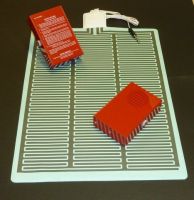
These are designed to help children and adults who wet the bed to develop bladder control. Most consist of a sheet or pad with a stitched-in sensitive electrode, which is placed underneath a draw sheet. The sensor is connected to an alarm unit, which will be triggered as soon as the sensor mat detects even a few drops of urine. Audible and vibrating alarms are available. For further information contact the Bladder & Bowel Foundation, a national organisation which provides information on bladder and bowel continence problems, or ERIC (Education and Resources for Improving Childhood Continence) a national charity which provides advice and information on nocturnal enuresis or bedwetting. ERIC has a telephone helpline as well as a range of bedding protection and enuresis alarms .
Choosing the right bed so that the spine is properly supported can help to relieve back pain. BackCare and the National Bed Federation produce a range of factsheets on buying a bed, with information on the different types of mattresses that are commonly available.

As a short-term solution, if the person's bed is too soft or sagging, a bed board can be placed under a mattress to make it firmer. However, this will only work if the bed base is soft or sprung, i.e. if the base is already solid it will not make any difference. If a mattress has become too soft to lie on comfortably, it is usually better to buy a new mattress. It is advisable to seek advice from a physiotherapist before using a bed board.
Most manufacturers of domestic beds make firm mattresses, which are often called orthopaedic although there is no national standard controlling the criteria.
The user should always try out the mattress before buying it because what is comfortable for one person may be very uncomfortable for another. It is advisable to visit a showroom with a range of beds and mattresses. Do not be afraid to lie on each bed and test it for as long as you can.
Companies who offer to make you an orthopaedic bed designed to suit your particular needs should be approached with caution. It may be a complete success, but remember that, because it is a one-off, you cannot try it out first. Companies have been known to claim, even if the bed is not comfortable, that it has been made specifically for you and that they cannot sell it to someone else.
Remember we spend at least one third of our lives in bed - this is a lot of time to suffer an uncomfortable bed.
These are designed to support the bedclothes at the foot end of the bed, so that a person can turn over more easily in bed and their legs and feet are protected if the weight of the bedclothes is causing undue pain or pressure. However, their presence may cause cold legs and feet.
Part of the frame runs between the mattress and the bed base so that the frame remains stable.

Bed grab handles are designed to aid a person getting in and out of bed and moving around whilst in bed. It is unsafe to use them as bed rails. Bed rails (cotsides) are designed to help prevent a person from rolling out of bed accidentally. It is essential that bed rails are suitable for the person who is using them and compatible with the particular beds being used. Most bed rails for domestic beds have bars which run across and between the bed and the mattress for greater security.
Serious injuries have occurred from the use of bed rails. The prescribing, selecting, fitting and maintenance of bed rails needs considerable care to avoid injury. The Medical Devices Agency (now within the Medicines and Healthcare Products Regulatory Agency (MHRA) issued a bulletin in July 2001 - Advice on the safe use of bed rails.
The bulletin recommends that alternative methods of bed care/management should be considered first, such as:
- tucked in sheets and blankets;
- variable height beds used in the lowered position (N.B. there are beds with an extra low height as a feature);
- soft cushioning on the floor to break a person’s fall;
- alarm systems (person, movement or pressure operated) to alert carers that a person has moved from his/her normal position;
- body positioning devices (these help to position a person with specific clinical needs, e.g. someone who has contractures).
- bed rails should never be used to restrain a person who may attempt to climb over them. They risk falling from a greater height;
- ensure the bed rail is suitable for the size of the occupant. Standard bed rails usually suit someone over the size of an average 12-year-old and are unsuitable for a smaller adult, young child or baby;
- care should be taken that the person does not injure themselves on hard metal frames and that heads or limbs do not become trapped by them. Limbs, for example, can be trapped in large spaces between bars, in the gap between the end of rail and headboard, between the mattress and lowest rail of the device or in the gap as a result of the weight of a patient compressing the mattress. Profiling beds need checking for dangerous gaps in all positions;
- some bed rails are provided with net sides to reduce the risk of impact injury. Some companies supply padding to go over rails. Do not assume the netting or padding will reduce the risk of being trapped. Also, some covers are not air-permeable and may present a risk of suffocation;
- take care if a mattress overlay is used or the mattress is changed. If the bed rail is too low (because of the extra height of the overlay) the occupant can fall over the top; softer surfaces can increase the risk of entrapment between mattress edge and rail; some mattresses are too light to hold the bed rail in place and there is the risk that the rail, mattress and occupant might fall. Check whether manufacturers and suppliers can provide secure fastenings and extra height bed rails.
Standard rails have safety catches on the outside. These can prevent an otherwise independent person from getting out of bed and going to the toilet.
However, a unique model is available which serves as a safety rail, can be used independently and also helps raise the person’s legs. An air filled platform first moves through 90° to bring the platform to the horizontal, lifting his/her legs. The user then moves the legs across into bed. The platform can be raised a further 90° to form a barrier to prevent him/her falling out of bed.
Pressing a button on the handset will deflate the platform to allow the user to get out of bed.
One solution considered to prevent accidental falls or to deter wandering is for the person to sleep on a mattress on the floor. It is very difficult to care for a person at this level. The risks from moving and handling and the loss of independence need to be balanced against the perceived benefits.

Movement monitors are available which alert a carer that a person is getting out of bed. They have a pressure sensitive plate, which is placed under the mattress and will set off an alarm when the person gets out of bed.

Floor-standing bookrests are available for people who are lying flat and are therefore unable to hold a book. The height of a vertical stand adjusts telescopically and a horizontal arm swivels towards and away from the user.
The book can be placed face downwards and can be angled to a convenient position for the user. On some models the book has to be removed each time the page needs turning. It may be possible to do this independently, although some people will require help.
A powered fully automated device controlled by switches is available which both holds the book in a downwards-facing position and turns the pages.
These enable a person who is lying flat or is unable to bend their neck, to read or watch television. They can be worn over normal glasses.
For people who display no danger signs such as reddening of the skin, a mattress that provides comfort alone may be all that is needed.
This may be quite sufficient although it should be checked every four to six months to make sure that the foam has not deteriorated.
Silicone fibre mattresses, made from hollow cored siliconised polyester fibre, feel rather like a thick duvet. Flame retardant and washable, they can be used as a comfort mattress or for people at low risk from pressure ulcers. The resilience and softness of the mattresses may vary.
Sheepskins do not relieve pressure but can be helpful when used in conjunction with other pressure relieving support systems because wool fibres are naturally resilient and so help to reduce shear forces. They also help to maintain low humidity and temperature by absorbing water vapour and heat. Sheepskins come in three main forms.
This wool fleece on its own leather backing is the most comfortable and reduces shear forces most efficiently. However, great care must be taken when washing, and the fleece must be regularly brushed so that the fibres do not become matted.
These skins are less resilient than the natural sheepskin and therefore do not reduce shear forces as efficiently. Also, they do not absorb heat and moisture so readily. However, they can be washed more easily and effectively.
Because it has been removed from its natural backing, the pile on this sheepskin tends to be shorter than on a natural sheepskin and is therefore slightly less resilient. However, this type of skin is easier to wash, although it still needs regular brushing to prevent matting.

The beanbag on the underside of the tray moulds to the shape of the lap to provide a more stable surface than a traditional tray. The trays are available with raised edges, recesses for plates and cups and slip-resistant tray mats. They come in a choice of designs and some have detachable beanbag bases for washing.

These are high-rimmed trays with two legs and a slip-resistant tray mat. They are designed to be stabilised by the legs, the width of which can be adjusted to fit snugly on either side of the person's thighs. The legs fold flat when not in use.

These are much smaller than bed tables, and are less sturdy. The cantilever tabletop is supported on one side only so that the table can be positioned close to the bed. Those without castors have a shallower base and may fit under a bed with only limited space underneath, although they are more difficult to manoeuvre into position. Some have the option of a tilting top for supporting a book, newspaper, or writing paper at an angle.

These are like hospital bed tables. They span the width of the bed with the legs resting on the floor on either side. They all have a tubular metal frame supporting a tabletop.

A wide range of book stands are available. Most are designed to hold books, although a few are large enough for magazines and newspapers. Some are floor standing and their height and angle can be adjusted; others are designed to rest on a table.

These are useful for people who are unable to turn the pages of a book. Two types of turner are available - a simple stick with a rubber tip used in the hands or mouth, or a powered fully automated device controlled by switches which both holds the book and turns the pages.
These can be draped across the bed and provide storage pockets in which to keep bits and pieces, such as books, knitting, TV controls.

This provides a method of securing items such as mirrors and cups in a convenient position.
01905 347538
CALL US TODAY · 01905 347538
SCOTLAND · 01738 310687
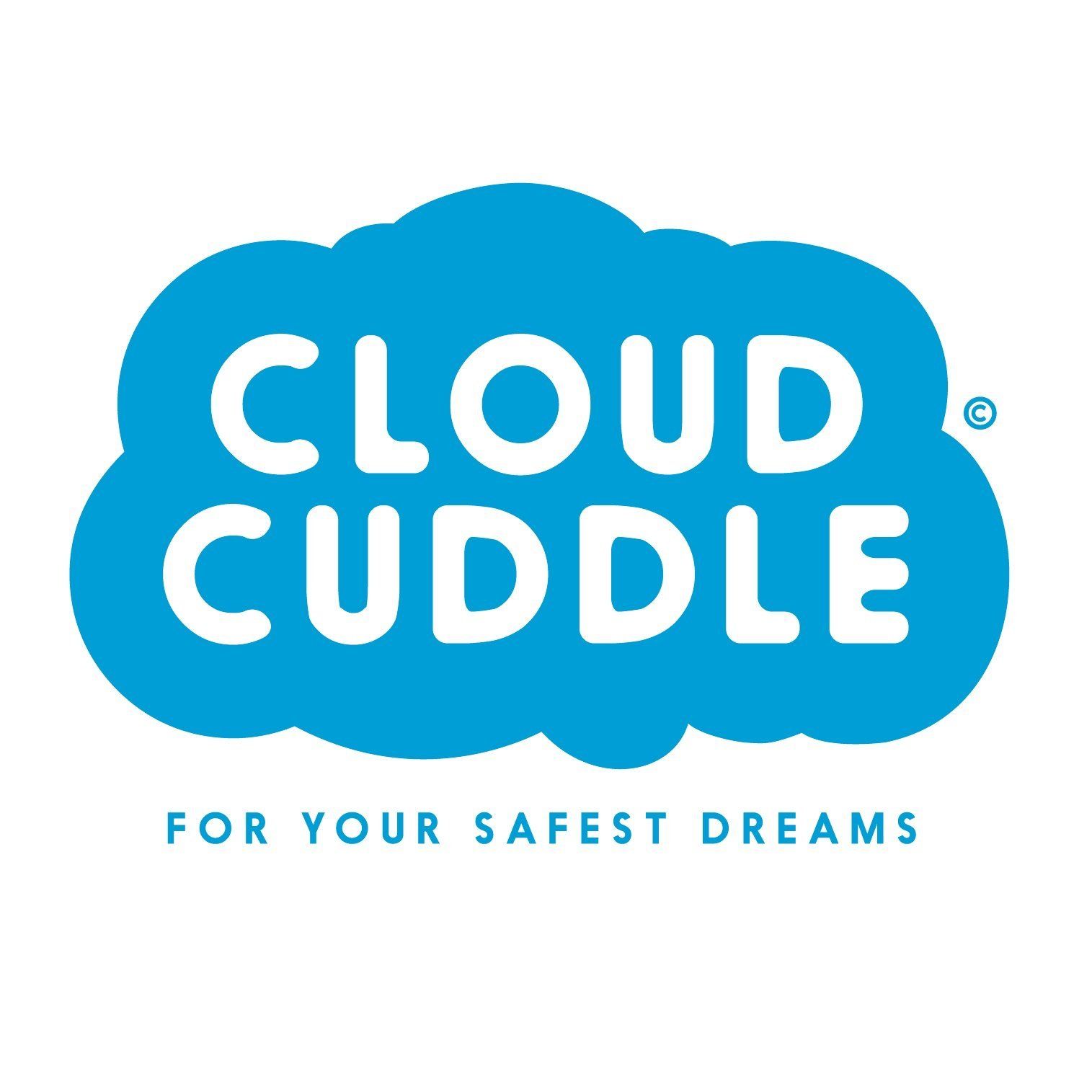
CLOUD CUDDLE - makes every bed a Safe Bed
Children's ot - product presentation.
The Cloud Cuddle turns every single bed into a safe bed for
Children with special needs., an ideal safe & calming long-term sleeping solution, recommended by healthcare professionals, cloudcuddle - where it’s used..
The Cloud Cuddle is an ideal solution for use at home by children who need a safe and calming place to sleep.
Recommended by Paediatric Occupational Therapists as a long-term solution, the Cloud Cuddle fits securely to all types of domestic single beds, Electric hi/lo Beds, or in some cases just on a mattress on the floor.
Ideal for use in Community Respite Centres and Children’s Hospices as well, where it can be easily added to a bed when required, but easily stored when not in use.
The Cloud Cuddle can be used as a travel bed, so replicating a child’s home sleeping environment.
How it Fits to any Single Bed
The base of the Product fits securely to a bed's mattress like a fitted sheet and is attached with tightening straps.
Then with the use of a lightweight pump, the product is inflated in a matter of minutes to create the sleeping area.
Additional Straps anchor the complete product to the bed.
All the material parts unzip and can be washed together at 60 ° for decontamination.
The base sheet unzips and can also be washed separately. An additional base sheet is supplied with the product.
Cost Saving
A Great Cost Saving option as in many cases it provides a safe bed, rather than a high value Electric Care Cot or Soft Sided Bed for younger children.
About the Cloud Cuddle
Tough, Robust and Durable and registered under the strict European guidelines as a CE Marked Class 1 Medical Device . Fits precisely to single mattress widths of 90 CM and its interior design has no potential entrapment points. The bed sides unzip on one or both sides to allow single or dual access if required and the setback design allows the use of a ceiling track hoist. As the product is fitted around the mattress it allows you to have a low entry height for a child to still enter their bed independently.
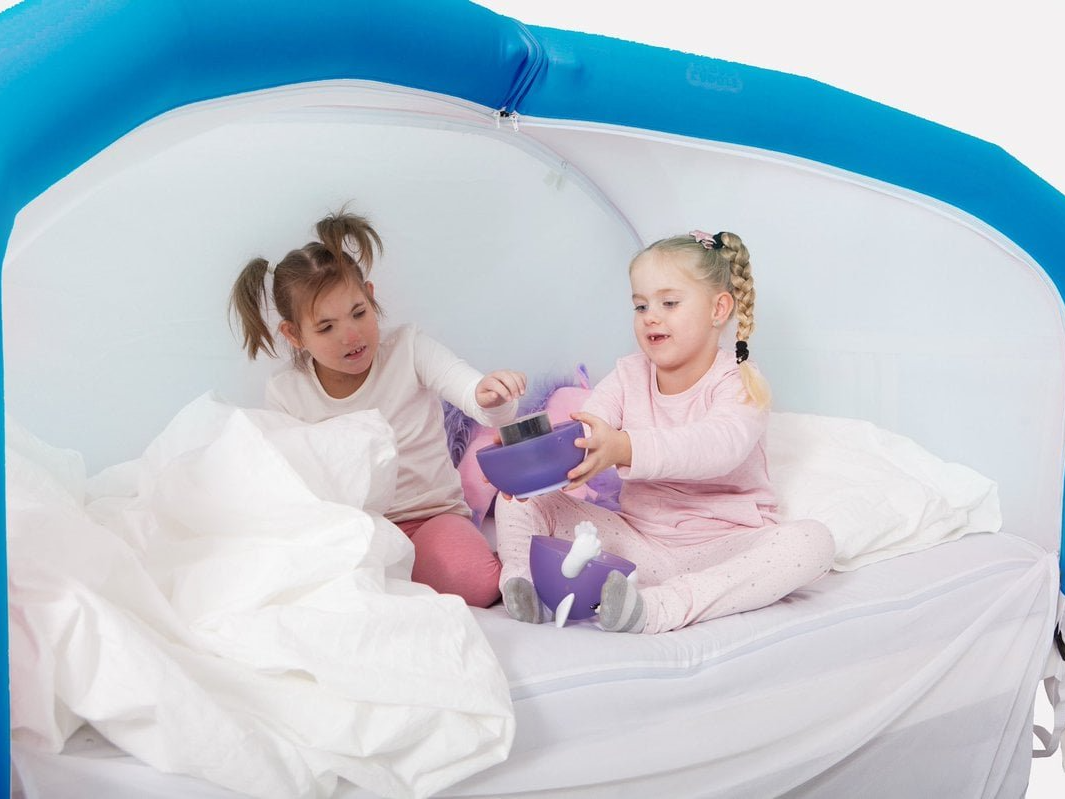
How to use the CloudCuddle bed-tent?
The CloudCuddle bed tent is really easy to use. First you attach the bed tent to the mattress and the bed. Then you pump up the tent. In just five minutes you can create a safe bed anywhere. The dismantling and tidying up is also a piece of cake. You let the air out, take the cover off the mattress, roll everything together and put the CloudCuddle in the bag. After five minutes everything is cleaned up. Watch the video below to see how easy it is to set up and tidy away the CloudCuddle.
Product Options and Specification
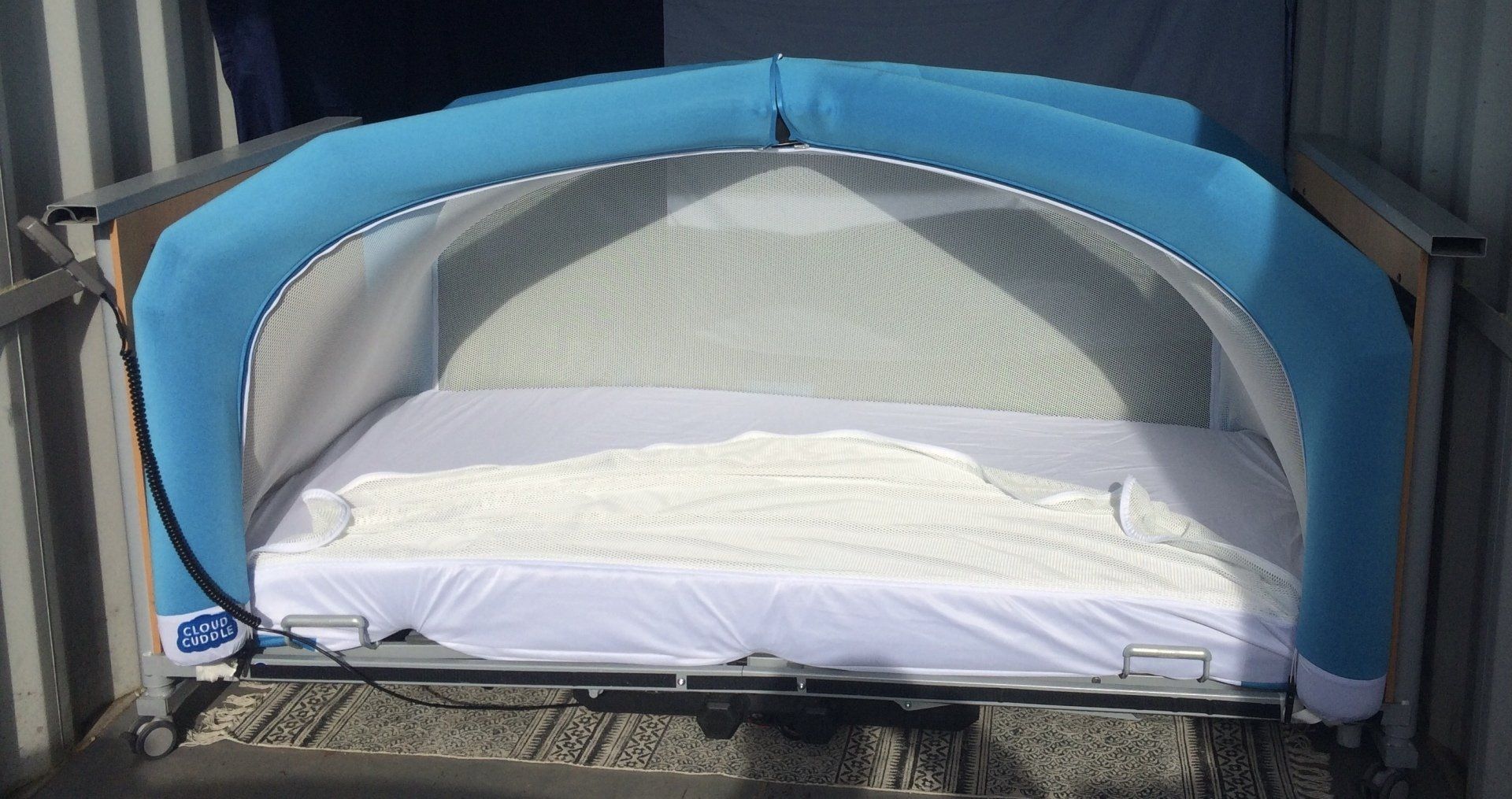
Cloud Cuddle fits too:
• Divan Beds
• Wooden Surround Beds
• Community High/Low Beds
• Hospital Beds
• A Mattress on the Floor
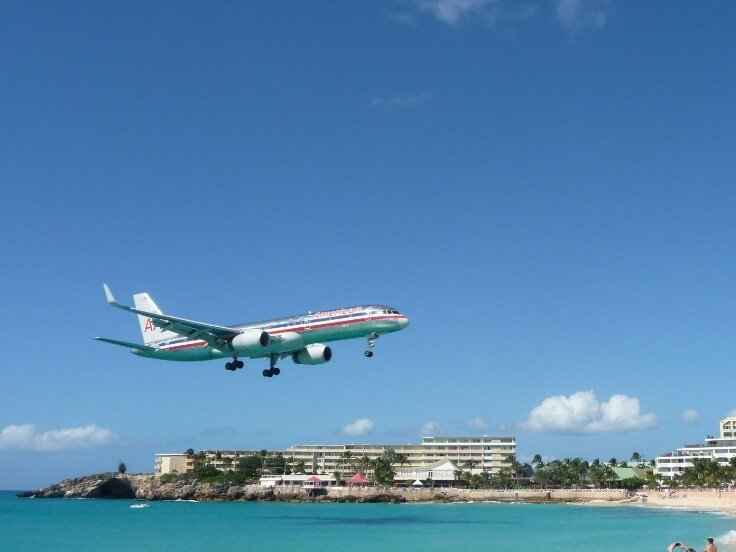
Where can it be used?
• At Home
• On Holiday
• At Respite Centres
• Hospital
• Staying with Relations
The CloudCuddle can be used on a bed or
on the floor. Please ensure it is fully
inflated, and that the mattress attachments and
corner attachments are fitted correctly before use.
CloudCuddle is foldable. Folded up the CloudCuddle,
fits into a weekend bag that you can take with you anywhere.
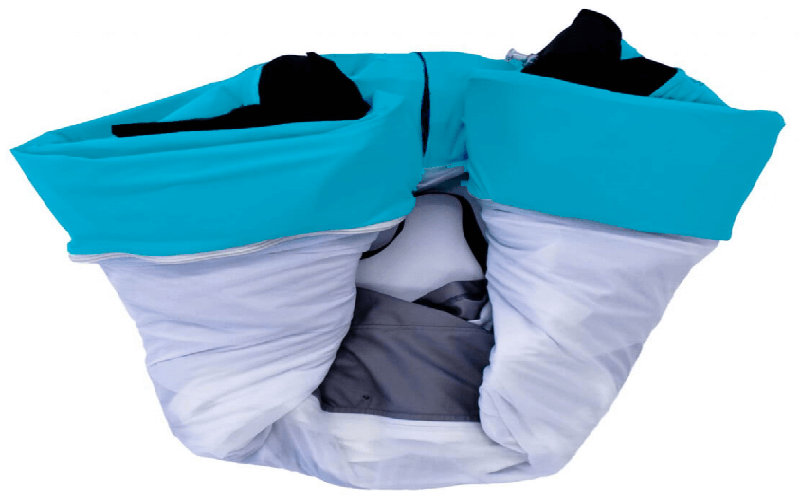
Dimensions and general information
General Foldable Weight: 5.2 kg
Pressure: 0.45 bar
In bag: 50 x 30 x 30 cm
Inflated: 200 cm length x 90 cm width
Height: 100 cm (Centre of the Bed)
Max seat height: 75 cm
Optimum mattress size: 200 cm x 90 cm x 16 cm
(CloudCuddle mattress attachments can
be adjusted to accept slight variants i.e 190 cm length)
CE Certificate CE – Marked Class 1 Medical Device
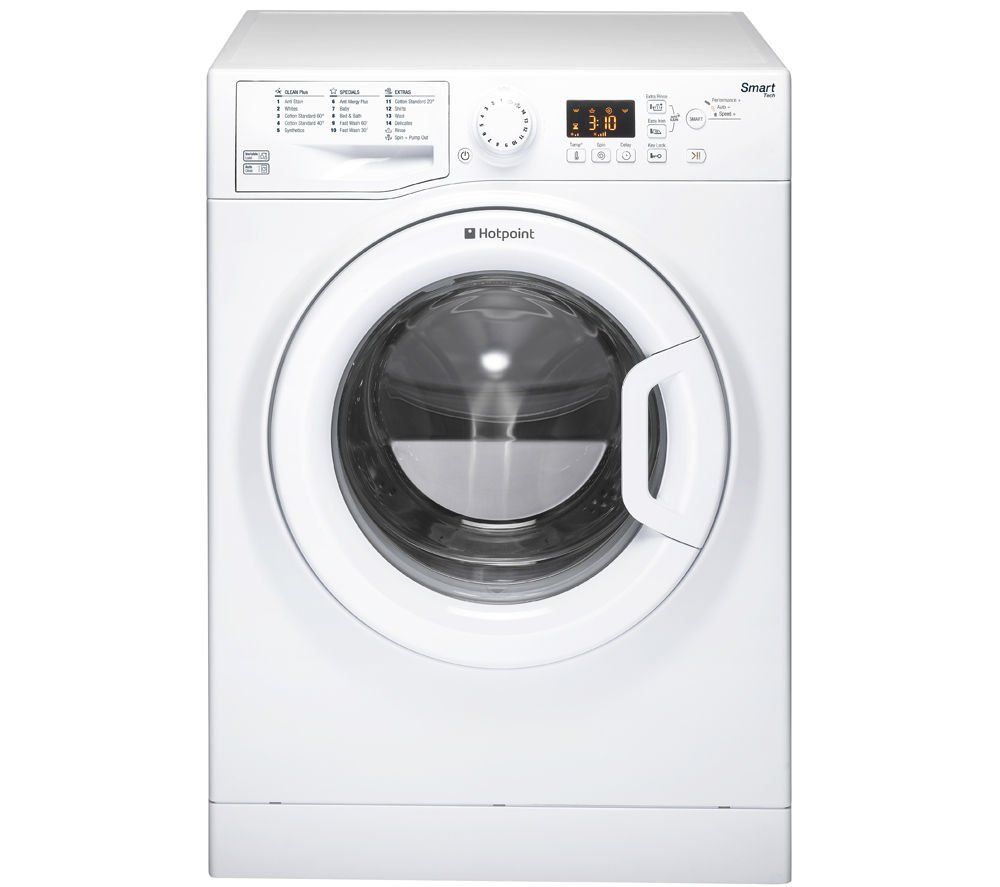
How to clean?
Minor accidents
you can simply unzip the fitted sheet and wash it separately.
Bigger accidents
In case of bigger accidents, you can unzip and wash the entire cover.
The fabrics dry quickly, so you can use the CloudCuddle again quickly.
NB: the inflatable frame is not machine washable.
Frequently Asked Questions
Click on a question to expand the answer*
CloudCuddle Gallery
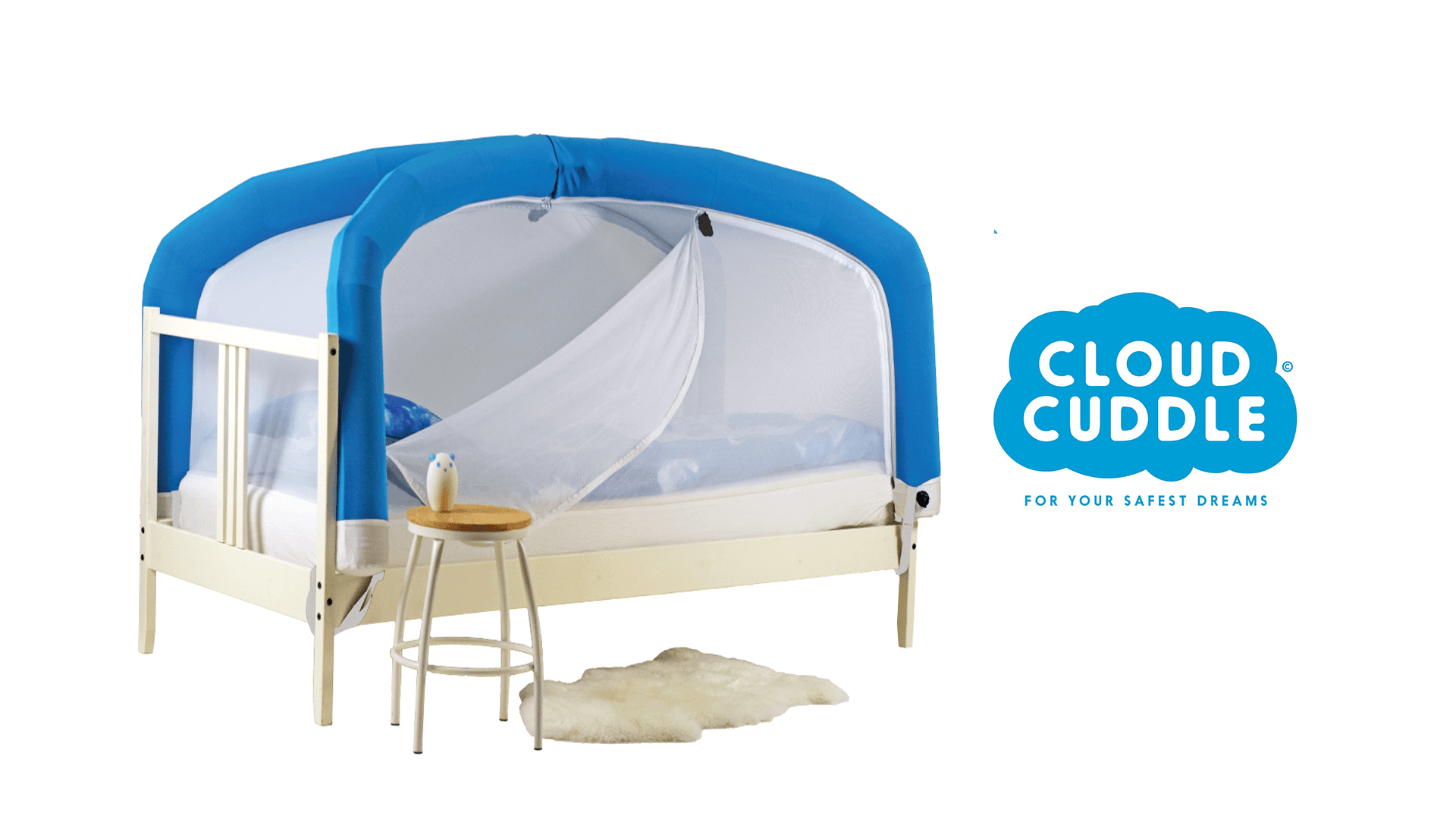
Slide title
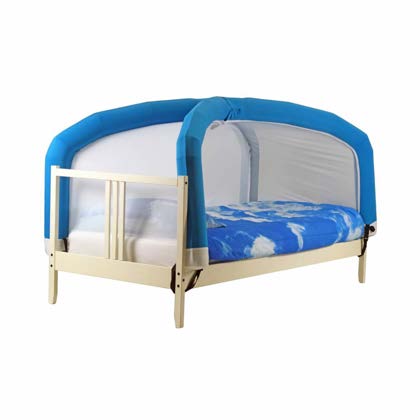
Established 2005
The fourways, bridge street, northumberland, united kingdom.
JavaScript seems to be disabled in your browser. For the best experience on our site, be sure to turn on Javascript in your browser.
We use cookies to make your experience better.
To comply with the new e-Privacy directive, we need to ask for your consent to set the cookies. Learn more .
- John Preston
- Meet The Team
- Aftersales
- Home demonstrations
- Disabled Access
- Wetroom Installs
- Overhead Hoist Installs
- Sensory Room Designs
- Immersive Reality

- Paediatrics
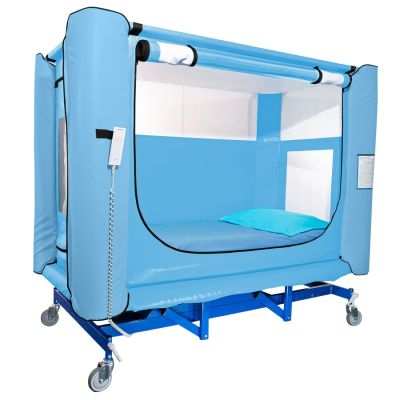
- Children's Beds 6 items
- Safespaces 6 items
Need some advice?
Give us a call if you have any questions:
028 9267 7077
9am - 5pm Monday - Friday
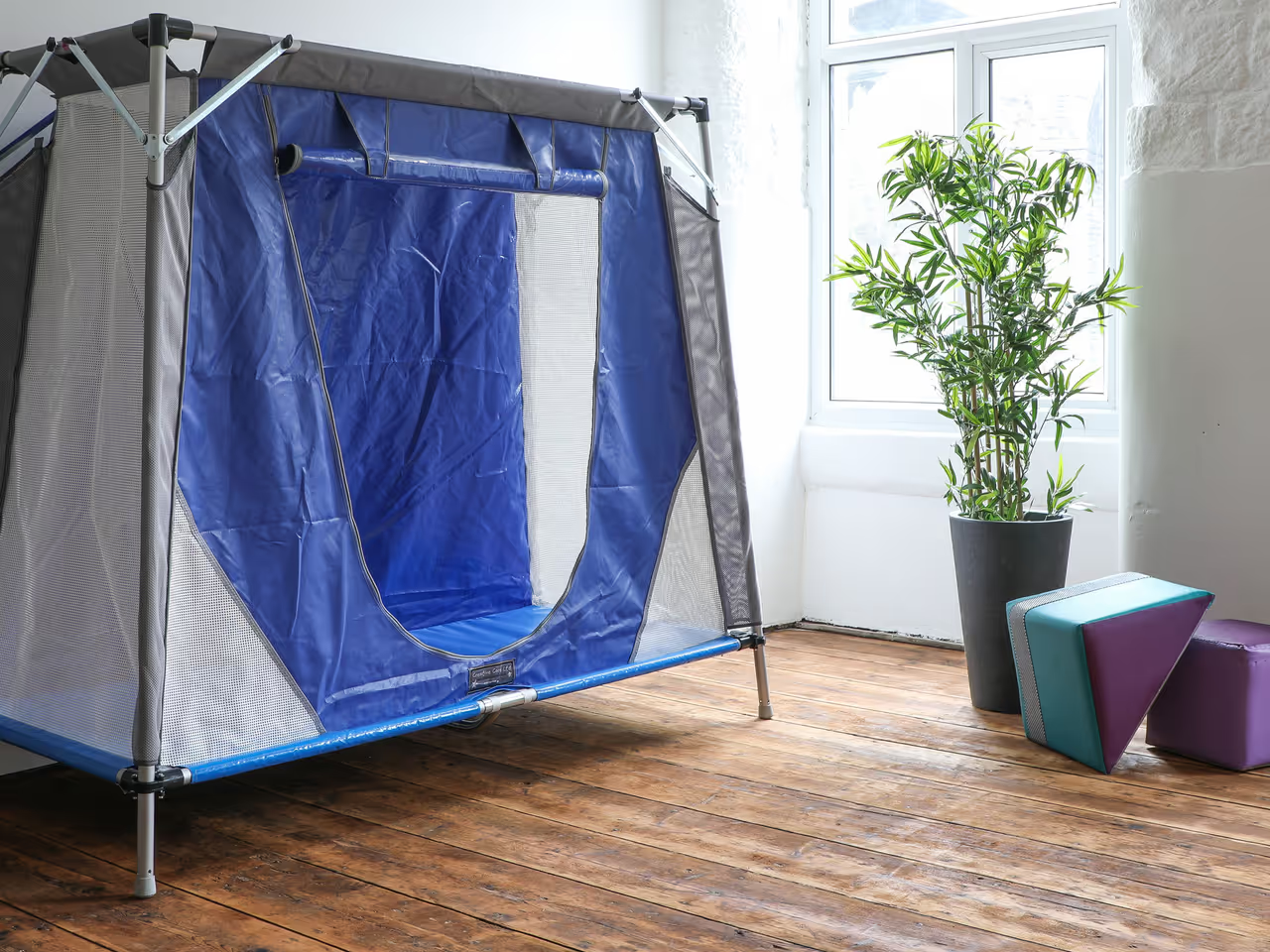
- Pricing Options
- Ordering and Assessments
Now available in both adult and junior sizes.
Compact and weighing only 24KG
External size 216cm L x 103cm W x 178cm H
Internal size 192cm L x 84cm W x 145cm H

Take our Safe & Sound Pod anywhere!
Fully enclosed, our Travel Pod offers the same peace of mind as our permanent Safe & Sound pods.
Range of attractive designs all built around our light weight but super tough frame.
Travel Pods can be taken on most aircraft free of charge if declared as medical equipment.
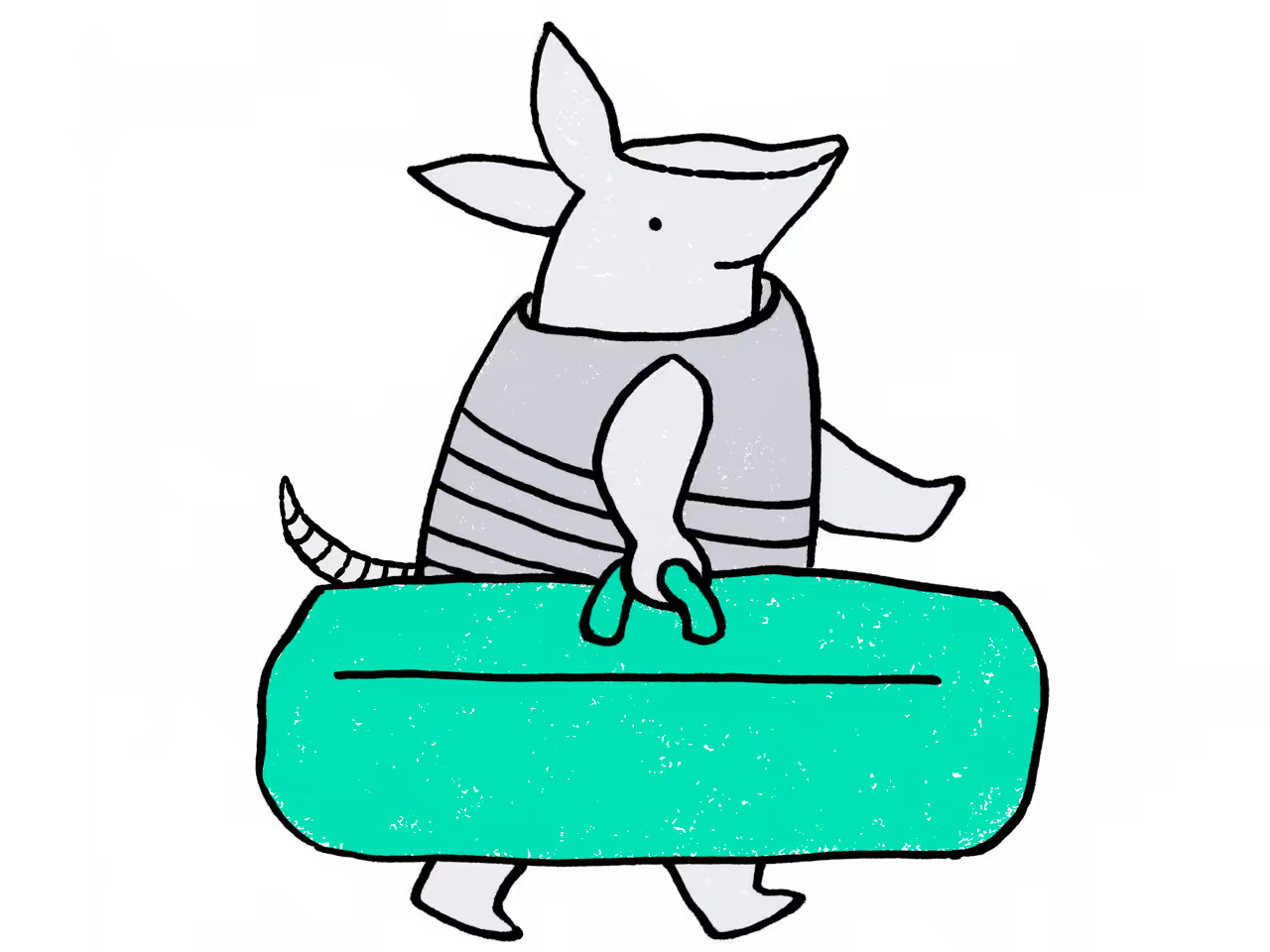
Packs down small!
The travel pod packs down into small transport bags designed to fit between the wheel arches of even the smallest of cars like a Volkswagen Up!
For travelling it packs in two transport bags which are just 28cm x 100cm long.

Concealed channel safely hides zips

Super tough wipe clean PVC fabric with protected stitches
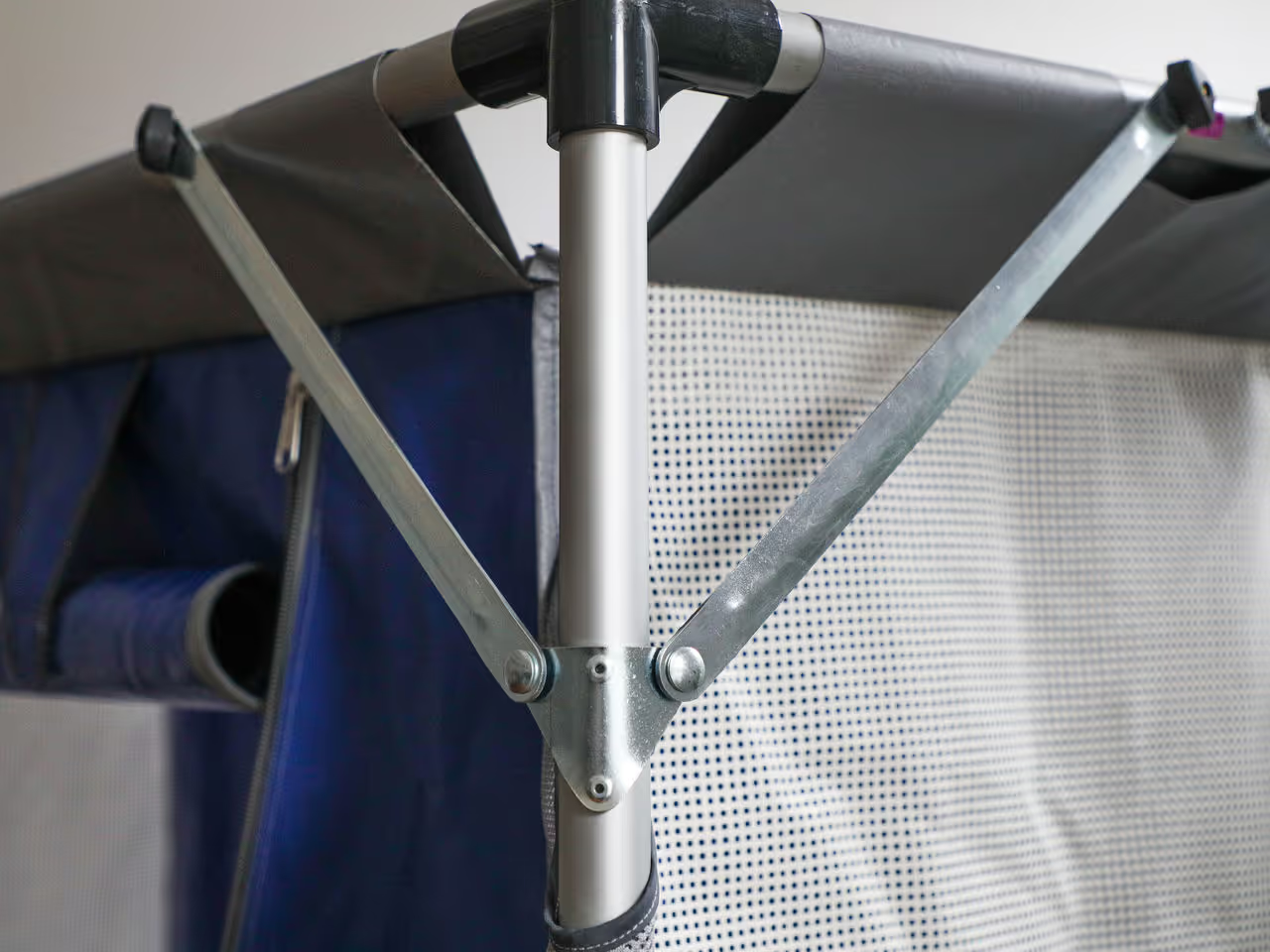
Secure, compact and lightweight
Useful information.
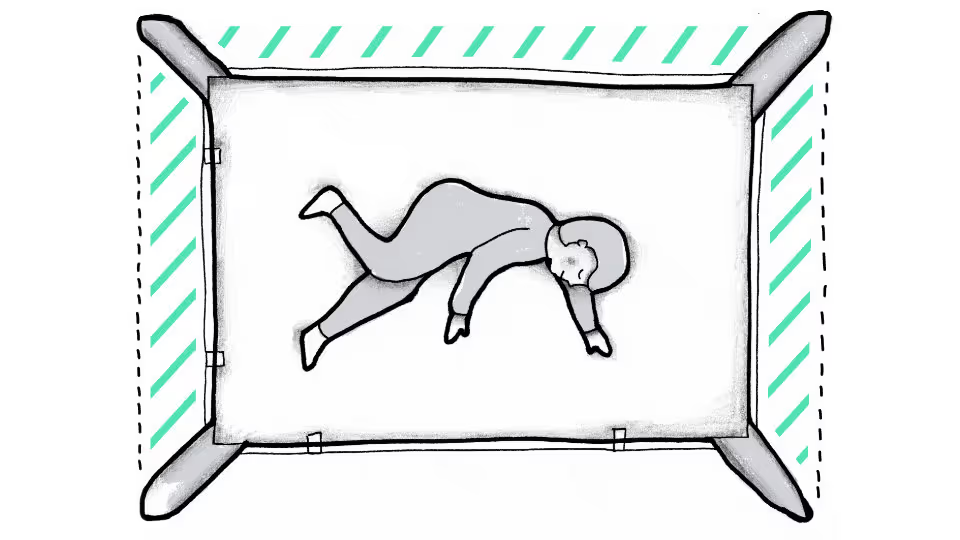
Room Placement Guide
How to ensure that your new bed fits the room.

Ordering Information
Find out about pricing options.
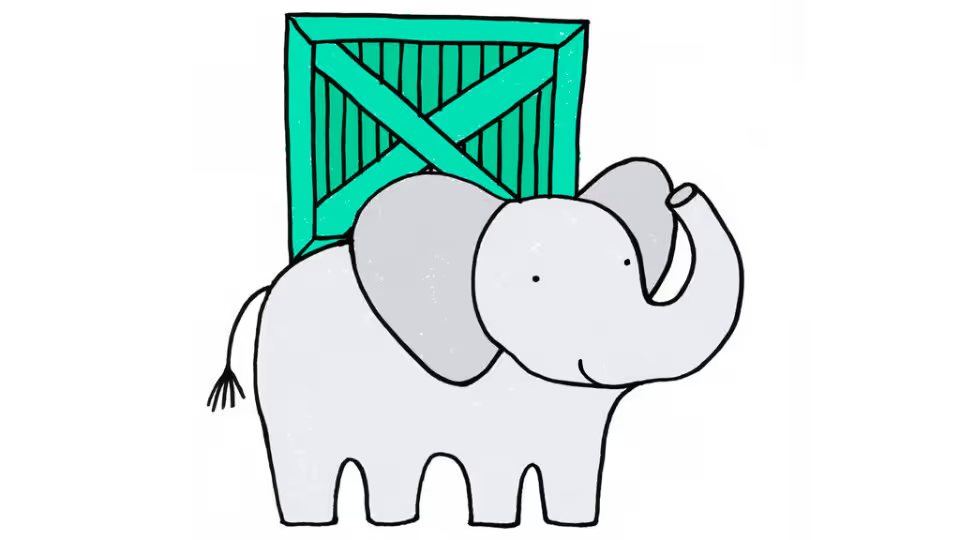
Pricing Information
Pricing information and options.
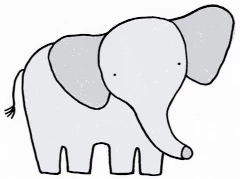

Special Families

STANDARD MODEL
Our base model is best for the families looking to keep their loved ones safe at night while they sleep. Packed with a ton of features every family needs.
PROFESSIONAL MODEL
This model has all the bells and whistle of our other model but gives a top entry point for your loved ones that needs life compatibility.
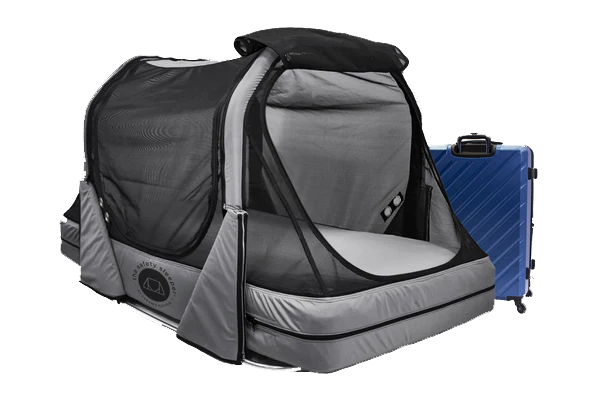
CUSTOM MODEL
We can customise your Safety Sleeper offering double, end access and video monitoring windows. We will be happy to discuss your needs.


Packed with Safety Features:

A layer of dense foam, cushions the metal frame to protect against injuries from seizures of self-harming behaviours. Frame pads and enclosure zip come on and off for easy removal.
Each model comes with 2 coverlet sheets. They’re secured with a zipper, which is only accessible from outside, to protect against entrapment while also preventing removal by your child.
In the professional model, four metal grommets (1 1/8 inch) provide access points on both sides for feeding tubes, oxygen tubing, pulse-ox sensors, etc.
All beds come ready to go, with a 10-inch air mattress and internal electric pump for travel. This is not designed for long-term use and is better suited to holidays or overnights with families/respite.
Easily open and secure the bed from the outside. Zippers can’t be accessed and unzipped from within.
Stabilising Straps anchor the Safety Sleeper to a traditional bed frame to prevent tipping and moving. Recommended for rambunctious older children and adults.
The Safety Sleeper folds perfectly into one hard-shell, wheeled suitcase. Except for the custom double, all models and sizes weigh less than 19 KG and are classed as free for air travel.
We can offer the optional extra to install a viewing window in vinyl or mesh for video monitoring if required.
Safety Sleeper Videos:
The Safety Sleeper “The SS is amazing!! I wish I knew about it sooner! Rio feels very safe and he has been taking himself in there. We have put his mattress in there and it fit!”
The Safety Sleeper “So we’re coming to the end of our safety sleeper trial ! And honestly there are no words. Anyone who knows Jesse knows he hasn’t slept since he was in the womb and running on 2/3 hours sleep a night had taken its toll ! As he’s gotten bigger safety was our BIGGEST concern as he was able to climb the banisters and the stair gate so when if he was asleep you couldn’t be ! We entered the competition over on my boy blue when Nicole Duggan told me about it !!! My bestie Catherine Rosneys sister won the prize and kindly offered it to us to try as we were desperate !! So Robert from Murray medical brought over the safety sleeper and low and behold he was right when he said it was easy to fold up and assemble !!! It was up in twenty minutes and when Jesse saw it his eyes lit up !!! It was a bed tent !! We let him play in it before bed and he absolutely adored it !! Night one and two were tough Jesse would wake panicked so we let him out I didn’t have high hopes !!! Then night three came and he slept from 7:45 till 8!!! I woke terrified afraid something had happened. !!! Then night 4 5 6 and 7 !! All full nights sleep !!!! This has literally changed our lives and we’ve begun the process of getting funding to buy one for Jesse !!! can’t thank Robert from Murray medical for actually caring about us and the situation we were in !!!! He’s quickly become a good friend and to anyone who hasn’t slept in 5 years !!!! There’s hope for us all”
“As we near the end of our trial with The Safety Sleeper from Murray’s Medical it’s time to tell you all how it went. I went into this with an open mind but sceptical as Andy has huge safety issues around bedtime. He takes hours to settle and wakes regularly. Andy is usually very hyper at bedtime so when Rob from Murray’s Medical said the bed can be very calming I chuckled and said “you don’t know Andy” Day 1. We set it up in his bedroom at home attached to a large mattress. It was easy to assemble and my husband could do it alone. Bedtime came and Andy jumped in!! Lay down and loved it. We zipped him in and waited, and waited….. nothing, he was asleep!!!!! I stayed awake all night listening. He NEVER woke during the night!! Miracle, or was it a fluke? Day2. Andy jumped in at bedtime, surely this would be the night it all went wrong? No, he slept soundly. Day 3. Maybe this is not a fluke?! Andy jumped in at bedtime and settled down nicely. He chatted away to himself in his own little language and drifted off to sleep. Even when he did wake during the night he happily lay in the bed until drifting off again. Day 4. We headed off on holiday to a house in Wexford. My husband easily took it apart and reassembled it in our holiday home. Again Andy settled each night and slept though the night. Overall: The bed is easy to put together. The travel blow up mattress held well, only needing to be pumped up a little after day 6. For anyone interested in trialing or seeing a demonstration of the bed please get in touch with the guys at Murray’s Medical. I’d highly recommend it!!! You won’t regret it! Signed: Olga (Andys Mom)”
“When we won the draw through Angelman UK to try the Safety Sleeper bed from Murrays we were so excited to learn more and trial Ruby in a safe bed. Prior to this loan we hadn’t wanted to purchase a bed as we didn’t know which one would be appropriate for Ruby and whether she would actually sleep comfortably and be happy in it. Due to the cost we knew it shouldn’t be a quick decision but didn’t know where to start. When Andy (from Murrays) delivered the bed we could tell straight away Ruby liked it. She jumped in and lay down kicking her legs and smiling. During the trial Ruby has slept exceedingly well and it’s cozy and safe for her. In addition, knowing she’s happy and safe means that we can sleep better as a family: which is essential with a 2yr and 4 month old!! We would recommend the bed to anyone. Felicity”
“Our youngest Adam is trialling the bed 1st. Went into bed at 8.50 and is snoring his brains out. Unfortunately when he seen the suitcase the bed came in he was convinced we where heading to Tenerife for a surprise holiday. (If only) Bed was easy enough to assemble and no relationship was harmed in the making of a flat pack. 🤣🤣 For more information on The Safety Sleeper get in touch.”
The Safety Sleeper provides a totally secure, safe and comfortable sleep solution for children and adults at risk to themselves or others. Prevents wandering, falling out of bed, injury during seizures and is entrapment proof. Sleep well in the knowledge your loved one is safe, comfy and secure in their Safety Sleeper. The unique value this product brings to the family is the ability to use it at home and also be able to take this environment with them when they need to travel.
New Features, Improved Safety & Extra Space:
- Extra 3 inches of headroom
- Door width increase by 2.5 inches
- Increased strength of frame joints by 27%
- Fully encased frame pads making assembly even easier
- Extended mesh on enclosure to improve visibility
- Improved lock clips
- *Access ports relocated to improve use with feeding tubes and other monitoring devices
- Adjusted pocket size (8-10 inches) allowing for easier mattress sourcing and insertion
- Added security system to mattress pocket zippers

- Fully portable and easy to transport
- Versatile for daily use and for travel
- Includes hard shell wheeled suitcase and air mattress
- Provides familiarity to loved one during travel
- Our beds are easy to transport, weighs less than 19kg
- Perfect for daily use, respite care, vacations, travel, hospital stays
- Spacious enough for an adult
- Fits perfectly in any size room
- Sets up in 5 minutes
- Easy to assemble with no tools needed
- Machine washable
- Waterproof padding available for attachable sheets (Coverlet)
- Coverlet (sheet) is removable for easy laundering
- Pressure tested for up to 300lbs.
- Built from durable fire-retardant materials
- Designed to hold up against high activity levels and such behaviors as head banging, seizures, and the like.
- Eliminates entrapment
- Different models for you to choose from
- Fully customised options to fit specific needs
- 3 fabric colours to choose from
- Twin, Full and Queen sizes available
- Can be customised to accommodate a video monitor or fit a bunk bed or captain’s bed
- Contact our customer care team for more information and pricing
Safety Sleeper Gallery

SAFETY FOR YOUR LOVED ONE! SECURITY FOR YOU! SWEET DREAMS FOR EVERYONE!
The Safety Sleeper® is a safe, fully enclosed bed system for children and adults with special needs for daily and travel use.

Murrays Medical UK,
Unit 2 Maguires Court,
Saxon Business Park,
Hanbury Road,
Stoke Prior,
Bromsgrove,
Worcestershire,
028 918 77951
Safe Place Beds are portable, inflatable safety beds, just for children with additional needs.
Lightweight -10kg
Portable - they fold down to the size of an airline carry on bag
Easy to set up - less than 15 minutes from start to finish
Wipe clean - because that's important
Secure - there are zipper locks for added security if your child needs them
Available in Aqua, Deep Blue, Grey and Pink
To use the bed simply inflate it and use the straps provided to strap it tightly to a stationary bed which is 135-200cm wide.

Base protector for Safe Place Bed

Safe Place Bed

Travel bag for Safe Place Bed

Electric air pump - three pin plug

Electric air pump - EU two pin plug

Manual pump for Safe Place Bed
The prices shown are tax free.
UK customers can buy a Safe Place Bed tax-free at the point of sale as long as you supply the name of the person using the Safe Place Bed and their diagnosis / condition at checkout. I need this information to comply with HMRC VAT notice 701/7 and it will only ever be used to demonstrate compliance with this.
Customers in the rest of the world have to pay tax and import duty according to the destination country. For France, Germany, Ireland, the Netherlands and Switzerland I have automated this at checkout.

Choose your colour
Safespace ® Hi-Lo
A robust, height adjustable bed with soft, flexible sides.
Suitable for
Medical Treatment
The Safespace® Hi-Lo is designed for individuals who require nursing care with the versatility of a height adjustable platform. The soft, flexible sides provide a comfortable, safe environment in which someone can sleep without the risk of injury from hard surfaces or moving parts.
The Safespace® Hi-Lo can be fully tailored to meet the needs of the user and their carers. This includes a number of panel options, including the choice of transparent windows to facilitate communication between the user and their carers and a number of openings providing a variety of access points.
Who is the Safespace® Hi-Lo suitable for?
The Safespace® Hi-Lo is designed for adults and children with complex needs and limited mobility. It is ideal for those who may demonstrate strong or self-injurious behaviours. Its robust design makes it suitable for individuals who may thrash, push or kick.
Respite Centres
Residential & Care Homes
Key Features
- Soft, flexible sides to prevent injury and a mesh ceiling
- Safe, low stimulation environment ideal for sleep
- Height adjustable platform for carers

Improve Sleep Patterns
The Safespace Hi-Lo is ideal for sleep as it provides a low sensory space that minimises stimulation helping the user to settle and sleep for longer periods. It also provides a safe environment for those who continue to wake at night.
Access Healthcare and Medical Treatment
For individuals who would be unsafe in a standard hospital bed, the Safespace Hi-Lo provides a safe and comfortable sleep space enabling them to access that all important medical treatment.
How can the Safespace® Hi-Lo be tailored to meet complex needs?
- Access Options
- Zip access for equipment
- Water resistant seams
Visit our accessories page.
Length: 198cm
Width: 91cm
Height: Lowest
Position: 180cm
Full Extension: 220cm
A minimum clearance of 25cm from the front/back panels and 33cm from the head/foot panels to any hard surface is required at all times.
UKCA, CE, MD
at we believe in
Customer care, innovative design, do you know someone with complex needs.
If you are a family member, carer, health or education professional struggling to create the right environment for someone with complex needs, including learning disabilities, Autism, epilepsy or behaviours of concern, we may be able to help.
Our customised safe rooms, high sided and hi-lo beds are used at home, in schools, hospitals and respite centres across the UK and worldwide. You can buy or rent a product designed to meet your specific requirements. We provide steam cleaning, and maintenance options.
Why choose Safespaces
Custom-made to meet complex needs
Trusted for over 20 years
Manufactured in the UK
Virtual assessments
Expert support and guidance
Compliant with MHRA Medical Device Regulations and CE/UKCA marked
Safespaces equipment is designed for adults & children with complex needs, including autism, epilepsy & behaviours of concern. Our tailored safe rooms, high sided and hi lo beds are used at home, in schools, hospitals and respite centres across the UK and worldwide.
- Our Products
- Funding Options
- Frequently Asked Questions
- Memberships and Awards
- Case Studies
- Testimonials
- Latest News
- Privacy Policy
© 2024 Safespaces (Cornholme) Limited. All Rights Reserved.

Privacy Overview

- 01978 820714
- [email protected]
NHS Approved Supplier
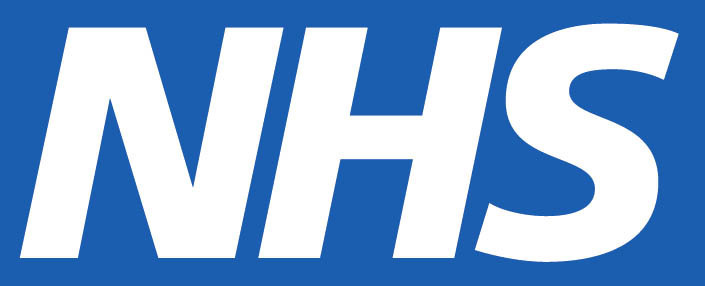
- Safety Beds
- Travel Beds
- Nursing Beds
- Foam Mattresses
- Alternating Air
- Bariatric Care

Bearhugzzz SpaceSaver bed
The Bearhugzzz SpaceSaver bed provides a soft, yet strong and safe environment for sleep, play and relaxation. Suitable for vulnerable children and adults, it is designed to accommodate the needs of people with autism, Angelman syndrome, epilepsy, challenging behaviour and multiple learning difficulties.
It can help to eliminate poor sleep patterns and provide safety for those who wake during the night. A major benefit is the bed’s ability to withstand vigorous behaviour, thanks to its soft padded sides which protect the user against injury. The steel walls are covered by soft foam with a waterproof, wipe-clean, antimicrobial fabric that is available in a range of beautiful patterns and colours.
The sides can be as high as your room will accommodate. A mattress is also included, and a safety base sheet attaches to the three walls and two doors for added security.
The Bearhugzzz is available with optional viewing panels which can be manufactured from clear vinyl or mesh. As each bed is individually made to order, we can manufacture it to any length, width and height to create a bespoke bed that is perfectly designed to fit into any space. A wooden base is also available to provide access for a mobile hoist.
Giving peace of mind that loved ones are in a safe environment, the bed will benefit not only the user, but also family-members or carers who generally have their sleep disturbed.
Please contact us today for further information about our Bearhugzzz SpaceSaver safe sleeping solution – we cover the whole of the UK and are available to carry out free demonstrations on any of our products. We would be more than happy to assist with assessments to ensure the optimum solution is achieved.
- Copyright © 2024, Kinderkey Healthcare Ltd
- Manage Consent
- Terms & Conditions
- Privacy & Cookies Policy
Your privacy settings
Manage consent preferences, embedded videos, google fonts, facebook advanced matching, facebook capi.
JavaScript seems to be disabled in your browser. You must have JavaScript enabled in your browser to utilize the functionality of this website.
NEED A GIFT ASAP? SEND AN E-GIFT CARD

We have answers right now!
Recently added item(s) ×
You have no items in your shopping cart.
- Spark Sensory Solutions
- Adaptive Star
- AmTryke Tricycles
- Ark Therapeutic Services, Inc.
- Circle Specialty
- Drive Medical
- EZ-ON Vests
- Inspired By Drive
- Leckey Adaptive Products
- Sensory Hugs
- Tranquility / Select
- Sensory Room Packages
- Bubble Tubes
- Fiber Optic Lighting
- Sensory Wall Panels
- Vibro-Acoustic
- Wall Padding
- Free Design Services
- Turnkey Installation
- Everyday Deals
- Gifts from $10 - $50
- Gifts Under $10
- Deals and Closeouts
- AAC & Communication
- Choice Making
- Language Development
- Multi-Message
- Single Message
- Visual Communication
- Adapted Toys, Games & Entertainment
- Computer Accessibility
- Input Devices
- iPad Accessories
- Switch Interfaces
- Hand & Finger Switches
- Wireless Switches
- Wired Single Switches
- Bath Chairs
- Benches & Stools
- Bathroom Safety
- Grab Bars & Rails
- Commode Chairs
- Splash Guards & Deflectors
- Toilet Seats
- Diapers & Incontinence
- Briefs & Diapers
- Pads & Liners
- Protective Underwear
- Swim Diapers
- Hygiene Tools & Accessories
- Shower Chairs
- Non-Reclining
- Arts & Crafts
- Art Supplies
- Drawing, Coloring & Painting
- Easels, Art Centers & Essentials
- Activity Kits
- Lacing & Tracing
- Patterns & Sequencing
- Math & Numbers
- Sign Language
- Writing Tools
- Handwriting Workbooks
- Pens & Pencils
- Slant Boards
- Teaching Tools
- Clocks & Timers
- Classroom Management
- Visual Schedules
- Whiteboards & Chalkboards
- Clinical & Therapy Supplies
- Dining Aids
- Cups & Drinking Aids
- Plates & Bowls
- Fine Motor & Dexterity
- Dressing Aids
- Lacing and Tracing
- Manipulatives
- Head Protection & Support
- Head Supports
- Handwriting Tools
- Grips & Holders
- Pen & Pencils
- Home Accessibility
- Home Safety
- Household Helpers
- Pointers & Page Turners
- Scissors & Cutting Aids
- Beds & Cots
- Cot Storage
- Chairs & Seating
- Classroom Chairs
- Play Furniture
- Soft Play Furniture
- Wall Panels
- Protective Mats & Padding
- Steps & Staircases
- Weight Racks
- Activity Tables
- Changing Tables
- Classroom Tables
- Examination & Treatment Tables
- Hand Therapy
- Canes & Crutches
- Gait Trainers & Walkers
- Gait Trainers
- Lifts & Slings
- Power Scooters
- Tricycles & Bicycles
- Adaptive Bikes
- Adaptive Tricycles
- Training Wheels
- Special Needs Bicycle Helmets & Head Supports
- Standers & Standing Aids
- Prone Standers
- Sit-to-Stand Standers
- Vertical Standers
- Dynamic & Mobile Standers
- Supine Standers
- Multi-Position Standers
- Transfer Aids
- Wheelchair Ramps
- Balance Play
- Discs & Stones
- Bouncing & Jumping
- Trampolines
- Exercise & Therapy Supplies
- Exercise, Gym & Therapy Mats
- Exercise Bands & Tubing
- Exercise & Therapy Equipment
- Exercise & Therapy Balls
- Free Weights
- Special Needs Swimming
- Accessories
- Adaptive Swings
- Adaptive Swing Seats
- Safety Mats
- Swing Frames
- Swing Hardware & Mounting
- Scooters & Scooter Boards
- Balance Walkers
- Hand-Propelled Scooters
- Scooter Boards & Crawlers
- Active Seating
- Benches & Footstools
- Car Seats & Seatbelt Guards
- Classroom Seating
- Tables & Desks
- Positioning Aids
- Bean Bags & Seating Pillows
- Bolsters, Rolls & Half Rolls
- Positioning & Therapy Wedges
- Positioning Systems
- Seating Systems
- Feeder Seats
- Floor Sitters
- Hi Lo Chairs
- Mobile Seating
- Positioning Chairs
- Tables, Trays & Easels
- Sensory Room Elements
- Calming Music
- Musical Instruments
- Speech Tools
- Sensory Bundles & Kits
- Bubble Toys
- Sensory Chewies & Oral Stimming Tools
- Aromatherapy
- Scented Putty
- Tactile Stimulation
- Fidget Toys
- Sensory Tables
- Squeeze Toys
- Therapy & Exercise Balls
- Inflatable Exercise Balls
- Tactile Balls
- Ball Accessories
- Vibrotactile
- Vestibular Motion
- Visual Motor
- Heat Sensitive
- Sensory Wearables
- Arm & Leg Weights
- Bottoms & Shorts
- Dressing Skills
- Head & Neck
- Head and Neck Support
- Tops & Vests
- Compression Vests
- Weighted Vests
- Weighted Blankets
- Weighted Lap Pads
- Weighted Accessories
- All-Terrain & Jogging Strollers
- Bus & Transit Strollers
- Car Seat-Style Strollers
- Early Intervention Strollers
- Lightweight Strollers
- Reclining Strollers
- Tilting Strollers
- Umbrella Strollers
- Stroller Accessories
- Wheelchairs
- Lightweight
- Pool & Beach
- Portable Ramps
- Active Play
- Activity Mats
- Play Centers
- Push & Pull Toys
- Riding Toys
- Tents & Tunnels
- Throwing & Catching
- Abstracts & Mosaics
- Art Essentials
- Drawing & Painting
- Moulding & Sculpting
- Building & Construction
- Building Blocks
- Build & Play
- Magnetic Construction
- Wooden Building
- Magnet Toys
- Games & Puzzles
- Letters & Numbers
- Outdoor Play
- Sandboxes & Sensory Tables
- Pretend Play
- Food & Cooking
- Toy Appliances
- Play Kitchens
- Jigsaw Puzzles
- Knob Puzzles
- Matching & Sorting Puzzles
- Puzzles Storage
- Sound Puzzles
- Wooden Puzzles
- Sensory Development
- Social Skills
- Conversation
- My Wishlist
- Furniture /
Safe Place Travel Bed
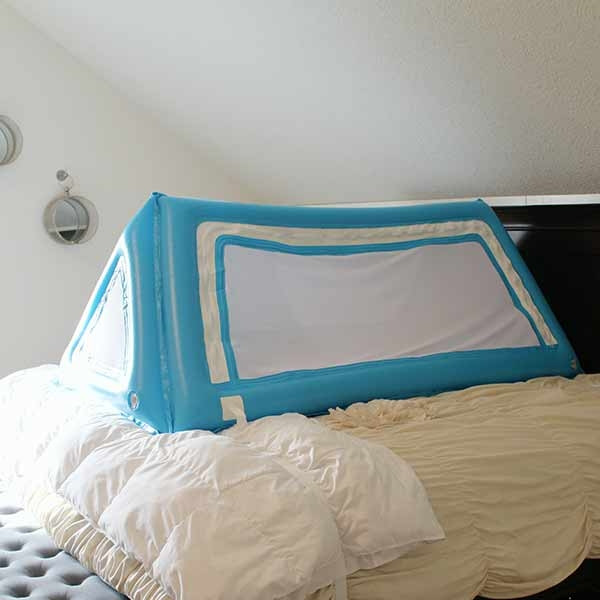
A portable personal sleeping space for children with sleep challenges, the Safe Place Travel Bed is an inflatable sleeping solution for on-the-go traveling. Twin size and durable enough to withstand kicks and other aggressive movements, it's a safe haven that goes wherever it's needed.
Safe Place Travel Beds are inflatable safety beds for special needs travel or stationary. They are individually made with high-grade materials to withstand kicks and movement.
The beds are twin size, and adjustable with strapping that allows a safe place to attach to any size bed. Zippered, netted panels provide easy entry and exit on each side; the zippers have a locking mechanism to be used for additional security if needed for your loved one.
The netted side panels also give air movement through the bed. The floor is made of soft, felted plastic for comfort and water tight.
This bed comes in a traveling bag with a hi-pressure electric air pump ready to serve your special needs travel. For your convenience we added a 6ft. electric cord to give you extra room to walk around your bed as you inflate it.
Each bed comes with a pump and a bag that weighs approx. 20 pounds. Blue in color. *Note: Travel bag design/color may vary.
Limited Full 90 Day warranty and Lifetime Guarantee
- THICKER and REINFORCED MATERIAL to withstand bites and scratches!
- WIDER WELDS to hold up to those strong kickers and acrobats!
- EASY TO CLEAN NETTING (we all know what for, right?)
- TRANSPARENT NETTING. Who doesn't want to peek in on their sleeping angels? And, easy visibility for monitor cameras!!
- ADJUSTABLE ZIPPER LOCKS for those Houdini's among us!
The Safe Place Bed Electric Pump Bundle contains:
- a Safe Place Travel Inflatable Twin-Sized Bed
- Straps for installation under a mattress or underneath a bed frame
- a Hi-Pressure Electric Pump w/ valve that monitors pressure
- a Travel Duffle Bag
- Instructions for easy setup
SPECIFICATIONS
Safe place travel bed specifications.
- Dimensions: 75"L x 39" W x 34"
- Weight: 20 lbs.
- Comes in blue, gray, or turquoise
- Bag Dimensions: 25.5" L x 13" W x 11"H
- Pump Dimensions: 10.5" x 8"W x 6.2"
- Includes an electric pump w/ valve that monitors pressure
- Safe for on a bed or floor usage
- Supports up to 220 lbs.
- Inflatable twin-sized bed
- Waterproof bottom layer
- Side panels are constructed of netting panels
- Zippers feature a locking mechanism
- Includes a travel bag
- Certified UL Lab tested
Safe Place Bed Electric Pump Bundle contains:
- 1 - Safe Place Travel Inflatable Twin-Sized Bed
- 1 - Pair of Straps
- 1 - Hi-Pressure Electric Pump w/ valve
- 1 - Travel Duffle Bag
Additional Information
Related products.

Teen Bed Time Bundle

The Safety Sleeper

Child Bed Time Bundle
Product Tags
Use spaces to separate tags. Use single quotes (') for phrases.
Connect With Us On Social Media
More ways to shop.
- eGift Cards
- Order Forms
- Catalog Request
- Purchase Orders
- Quote Request
- Wall Padding Planning Guide
- Schools & Government Agencies
Info Center
- Privacy Policy
- Return Policy
- Shipping Information
- International Customers
- Terms & Conditions
- Letters of Medical Necessity
- Measurement Forms
- Diaper Request
About eSpecial Needs
- Company Information
- eSpecial Needs Blog
Receive a 10% off discount on your next order

video title

IMAGES
VIDEO
COMMENTS
Our tailor-made Safespaces, high sided beds are used at home, in schools, hospitals and respite centres across the UK and worldwide. There are many funding options available for our products. If you would like to speak to our expert team we can offer further guidance and discuss the best options for you to consider. Get in touch.
We create hand crafted, stylish beds to keep your loved ones safe. Trusted and loved by families and caregivers worldwide. Skip Navigation Email us [email protected] Call us: +44 (0)7585 667 248
Packed Dimensions & Weight. Holdall 1: 100cm x 37cm x 24cm - 10.5kg. Holdall 2: 100cm x 37cm x 24cm - 16kg. Speak to an expert today. Safespace Voyager / Voyager compact - portable safespace ideal for taking on holidays. We are proud to be a distributor of Safespaces in Northern Ireland. Safespace equipment is designed for adults.
With practice, the Voyager can be assembled in 10 minutes. Dimensions. (Assembled) Internal length, width and height 194cm x 72.5cm x 161cm (76" x 28.5" x 63") (Assembled) External length, width and height 211cm x 152cm x 206cm (83" x 60" x 81") Packed Dimensions and Weight. Holdall 1: 117cm x 38cm x 30 cm - 20kg.
Our range of safe space beds. ... View Standard. Travel Pod. Our Travel Pod offers the same peace of mind as our permanent Safe & Sound pods. View Travel Pod. Complex Care. Our super flexible bed for complex care needs. View Complex Care. Unique features for peace of mind. ... UK +44 (0)7585 667 248 ...
UrZone gives you 'Me Time' wherever you are. With a user-led design, HKD Solutions Ltd. have created a low sensory multi-functional safe space for sleep, calming down and relaxing. Designed for both children and adults, the UrZone ensures safe, comfortable sleep for individuals with additional, often complex needs and frequently for challenging ...
Safe space beds, also known as enclosed safety beds, are specialised beds that provide a safe and secure sleeping environment for children and adults with special needs. ... Safe & Sound Pod; Travel pod; Complex Care; Useful info. Room placement guide; Pricing options; Ordering & assessments; ... Lancs. OL14 5RF UK +44 (0)7585 667 248 sales ...
Manufacturer's Product Description. The Voyager travel bed provides a low stimulation, safe sleep environment designed for holidays, respite care and trips away from home. It has flexible walls and a soft floor, providing a comfortable and safe environment that reduces the risk of injury from hard surfaces, providing peace of mind for parents ...
Safe Place Beds are travel beds - just for c hildren with additional needs Lightweight, compact and easy to use. Simply inflate, and use the straps to attach it to a stationary bed that's at least 135cm wide 30 day returns and one year warranty
You can turn a single bed into a safe place to sleep for your child in just a few minutes. ... [email protected]. CALL US TODAY · 01905 347538. SCOTLAND · 01738 310687. Home; About Us; Products. Alert Care Beds; ... The Cloud Cuddle can be used as a travel bed, so replicating a child's home sleeping environment. ...
Safespaces. Attractive, safe, living and sleeping spaces for people with special needs. Safespaces equipment is designed for adults and children who may be unsafe in an ordinary room or bed. Typically we supply products for people with special, sometimes very complex needs including autism, epilepsy and behaviours that challenge.
The Bearhugzzz SpaceSaver Bed is a safe sleeping space that can be made to any length, width or height. Available with optional window panels, it is designed to promote safe sleeping for vulnerable adults and children. ... NHS Approved Supplier. BHTA Member. Manufactured in Wales Since 2001. Browse Categories. Safety Beds; Cot Beds; Travel Beds ...
A compact and safe travel bed. The Voyager Compact provides a cosy, low stimulation, sleep environment ideal for those who prefer smaller spaces. Designed for holidays, respite care and trips away from home, the Voyager Compact has flexible walls and a soft floor. Its compact, robust design makes it particularly suited to those with strong ...
We create hand crafted, stylish beds to keep your loved ones safe. Trusted and loved by families and caregivers worldwide. ... Fully enclosed, our Travel Pod offers the same peace of mind as our permanent Safe & Sound pods. Range of attractive designs all built around our light weight but super tough frame. ... UK +44 (0)7585 667 248
Mrs. Yasmin Parker, UK. The Safety Sleeper provides a totally secure, safe and comfortable sleep solution for children and adults at risk to themselves or others. Prevents wandering, falling out of bed, injury during seizures and is entrapment proof. Sleep well in the knowledge your loved one is safe, comfy and secure in their Safety Sleeper.
Buy Safe Place Beds, travel bags and pumps. We ship to the UK, Europe and beyond. top of page. Home. Shop. About. Blog. ... UK customers can buy a Safe Place Bed tax-free at the point of sale as long as you supply the name of the person using the Safe Place Bed and their diagnosis / condition at checkout. I need this information to comply with ...
Size. Length: 198cm. Width: 91cm. Height: Lowest. Position: 180cm. Full Extension: 220cm. Safety Requirements. A minimum clearance of 25cm from the front/back panels and 33cm from the head/foot panels to any hard surface is required at all times. Certifications.
Call Us: 01978 820 714. Product Description. Features. Product Description. The Bearhugzzz SpaceSaver bed provides a soft, yet strong and safe environment for sleep, play and relaxation. Suitable for vulnerable children and adults, it is designed to accommodate the needs of people with autism, Angelman syndrome, epilepsy, challenging behaviour ...
Contact us at 877-664-4565 for other recommendations. Description. Specs. Info. Safe Place Travel Beds are inflatable safety beds for special needs travel or stationary. They are individually made with high-grade materials to withstand kicks and movement. The beds are twin size, and adjustable with strapping that allows a safe place to attach ...